Organization Design is both an art and a science. As an Art, requires one to be creative with their imagination, conceptualize ideas, and understand culture and behaviors. It is also considered a Science because specific knowledge along with objective observations, measurement of data evidence, and reasoning to establish general rules or conclusions drawn from facts or examples must all apply- not forgetting testing hypotheses against set benchmarks. Organizational design is a rapidly developing research discipline. The evolution of management ideas and approaches has occurred at the same time. Organizational Design methods and organizational structures have also changed over time. Today's changing workplace cultures, as well as growing technology usage and evolving work cultures, are causing traditional organizational structures and working styles to change rapidly. Getting business design correct from the outset through growth and adaptation is crucial. A good organizational design allows for improved communication, increased production, and encouraging creativity. It creates a work environment where people may perform effectively. Most significantly, effective company design aids in the development of strategic competence. At this time, every economy worldwide is trying to make sense of how COVID has impacted its markets. Employees are struggling with unemployment, and businesses have been forced to change how they operate. Some economies will be fighting for a long time against declining growth rates, but others have the opportunity to invest in ways that promote growth and counterbalance pandemic losses. One of the most important factors for economies to realign and grow is the successful development of organizations within the economy. The success of an economy relies heavily on effective design, development, and operations of organizations across sectors, increasing value for investments both locally and globally. This guide is designed to help business leaders of all levels comprehend the basics of organization design and how they can create a more efficient workplace. This guide seeks to provide managers with practical solutions, templates, case studies, thoughts, and examples of problems other businesses have encountered to assist them. The goal is also to help company executives develop ways to restructure their organizations to increase productivity and performance. The most effective approach to getting started is to have a basic knowledge of Organization Design. There are many definitions and explanations of "Organization Design." One of the most frequent definitions is Organization Design, a systematic approach to synchronizing structures, processes, leadership, culture, employees, procedures, and metrics to enable businesses to achieve their goals and strategies. The goal of Organization Design is to establish and align the structure of an organization to its goals for it to have a formal organizational structure with roles and reporting lines within the organization. An organization structure is a method of detailing reporting lines and organizational activities' progress. Roles, duties, governance structures, and aims are all examples of these operations. The structure also establishes the organizational levels and how information travels between them. According to early research in the field, there is no one best structure for an organization. Organizations are diverse in their way and are not all as successful or efficient. (Galbraith 1973) This is very true even today. The variety of organizational structures available indicates that none is suitable for everyone. Good Organization Design adheres to the company's objectives to its structures and management processes, which include: The division of accountability specifies who is responsible for what. The division of power determines subordinate/boss relationships. Integration of activities ensures that teams, departments, business functions, and business units work together effectively. Finally, structurally binding jobs and units creates a support system for their effectiveness. The acronym "OD" is frequently used in business to designate Organization Design. Academics, on the other hand, prefer the term "OD" to refer more to "Organizational Development," which is a much broader Human Resource (HR) activity that includes organizational structural design, talent development, culture, and capability. It should be noted that organizational design should be considered part of organizational development, arguably the most essential aspect. The need for Organization Design is instigated for a variety of reasons. The first might be the need to create the structure of a new startup company, a new line of business, or a new division. Then there's the need for Organization Design due to a merger or acquisition, rapid development, or a new management team with new approaches. Organization Design is often used in established organizations to change the structure when performance is sub-optimum. This process is called Organizational Restructuring, and it can be complex with many implementation challenges that must be considered carefully. According to Corkindale (2011), organization design is an ongoing process that improves over time as organizations inevitably change. Productivity and performance issues are often caused by poor organizational design resulting in, but not limited to, role confusion, lack of coordination among teams, and trouble sharing ideas. This book is a comprehensive guide to Organization Design, covering everything from the initial planning stages to post-implementation challenges. Readers will learn about all the different types of triggers for organizational change, as well as practical considerations for ensuring a successful design and implementation process. Organizational case studies have been utilized to illustrate real-world Organization Design problems, techniques, and outcomes. However, this book does not analyze the organization's legal structure (e.g., limited company, partnership, public listed, etc.). The governance processes would differ depending on the sort of legal structure utilized. For example, the board of a publicly listed business is structured and organized differently than a partnership firm's board. The general idea is that, once a company has been created, the process of designing organization structures is mostly the same regardless of the legal framework involved. When it comes to organization structures, one of the most important things to keep in mind is that they are never designed independently. The design of an organization must enable, complement, and interact with other People-related elements within the company, such as the reward plan, performance and career management framework, and recruitment strategy. A People Strategy is planning how a company's structure should be best designed to achieve its goals. This strategic activity takes into account aspects such as division of accountability and integration of activities when making decisions. When starting a new business or line of business, managers have a common question: "How much detail do we need when designing the future organization?" The answer is that the required design level should follow the organization's phase. For example, less detail might be required if an organization is in its early stages. Or, if an organization has been established for a while and is now introducing a new product line, more detail might be needed so that employees know how best to support it. In either case, the design should be integrated with People Strategy. The priority areas for HR to focus on during an organization's evolution are numerous. It's critical to strike the correct chords at the appropriate time, so efforts are not squandered and HR initiatives are effective and significant. The main areas of HR focus that may be found throughout the three phases of an organization's foundation and development are listed below. Develop a value proposition: Why should the employee work for your organization? Based on the business plan, create the short-term structure. (Roles needed for the first year of operations) Define key capabilities and skill sets for the current leadership team. Define a leadership team profile in line with the value proposition. Establish KPIs for the CEO and the leadership team. Develop job descriptions for management roles according to the short-term organizational structure. Designate authority over HR matters to various individuals based on an HR Delegation of Authority matrix. Create HR rules and regulations for immediate operation. Design an Operating Model that is sustainable and will not require changes in the near future, as well as an organizational structure based on that. The organization's Reward strategy should contain: Align each scheme with the overall strategy, people performance management, and an organization scorecard. Create a comprehensive HR handbook and manual that includes the following: Implementing detailed HR Operating processes, including Recruitment Strategy and Operations. You can help your company's employees grow intellectually and be more creative by developing a learning plan that contains the following: Develop plans to improve employee satisfaction and investment in their work. Doty et al. (1993) found that an organization's design significantly impacts how well the organization functions. Later research by Burton et al. showed that nearly 30% of an organization's performance could be determined by its design (2002). Organizational design is a significant factor in an organization's success and how its employees work together. Burton and Obel (2018) found that designing organizations should be based on scientific research and done with the future in mind. Having looked at various services and sectors, these are the key steps to explore when thinking about Organization Design: Following the steps above and implementing them correctly will greatly increase your chance of success in business performance through Organization Design. As mentioned earlier, this guide does not discuss the setup and functioning of boards and governance structures. The assumption here is that once a company has been set up, regardless of legal status, the considerations for organization design are essentially the same. The nine phases are described in further depth below. They can all be done in sequence or one at a time, depending on the company's requirements and development stage. Jane, the CEO of a fast-growing international technology firm, explained her frustration that the organization could not take ownership of activities and collaborate to execute objectives. She recognized that her leadership team agreed on quarterly collaborative business goals. Still, when she reviewed progress against the objectives established, in most cases, she was informed that conflicting company priorities and pressing issues had prevented them from progressing. She felt as if she had never been able to accomplish anything. She described the four friction sources she'd tried to solve. She explained a series of operational activities focused on managing her leadership team, such as weekly check-ins, online dashboards that show progress against initiatives, monthly "informal" team lunches to encourage teamwork and limit email length: In cooperation with the consultants, the board's leadership team found that the top executive saw their problem as one of accountability and capability. However, according to several of the CEO's direct reports and time spent in the company, something rather different emerged. The difficulties mentioned by the CEO were really caused by an ineffective organization design and governance structure. Her staff could not progress due to a lack of effective cooperation between key departments within the firm. There was no place for executives to discuss conflicting priorities productively. The organization was designed as a matrix organization, meaning that most people had two bosses. In this case, they were organized around functions, such as marketing, sales, and engineering. They were also organized around three customer segments: enterprise platform users, small businesses, and individual software users. Each team was led by a functional head and a division VP in charge of their assigned customer segment. The problem was that the VPs in charge of divisions reported to the COO, and the functional heads reported to the CEO. When Jane's team met to establish priorities across functions, the division VPs were not at the meeting to decide priorities within each function. In other words, Jane's company was not meant to manage a matrix. Her business was created to oversee a vertical functional organization. In an intricate organization design such as a matrix, decision-making systems must be implemented to regulate the conflicts that develop over priorities and resources. Otherwise, those conflicts will become dysfunctional if left unaddressed - which is what happened with Jane. Until she addressed the root of the problem, no minor fix would resolve the issue of clashing priorities. After she figured this out, she added the customer segment VPs to her leadership team and started giving the three customer segment teams more control over operational trade-offs. This included letting them set priorities for both segments and functions in the near future. The most frequent blunder businesses make is getting involved in building an organization structure before establishing the purpose of the business sector, division, or company. An organization's purpose should be at its core. What is the company's objective, and why does it want to exist? Its purpose is to provide context for decisions concerning the organization structure and roles within that framework. Many executives have asked, "How do I define the goal of my organization?" The company or business unit's purpose should be able to be stated in a single sentence (or two). It can be industry-specific or wide enough to cover ancillary and future commercial activities. The company's objective is also its mission, which complements the vision or aim of the organization. Consider the following examples of globally successful companies to help you think about the purpose of your organization. Note how precise and simple the objective is in particular. To combine the world's data and make it universally available, accessible, and useful. To help people and businesses achieve their goals and reach their full potential. At our company, we strive to expand human potential through sport. To do so, we innovate sustainable products and work with a diverse team that positively impacts the communities in which they live and work. We'll do it for the human spirit - one person, cup, and neighborhood at a time At Proof, we strive to provide our customers with the best possible user experience through innovative hardware, software, and services Focus on selection, price, and convenience for consumers through online and physical stores. An Operating Model is a strategic framework that takes an organization's defined purpose and turns it into plans and strategies. It's an abstract representation of how an organization creates value for its customers or beneficiaries and visualizes how the organization functions. COM refers to how an organization is currently configured, whereas TOM showcases a future state that the organization should strive to achieve. Most of the time, redesigning an organization begins with understanding the new Target Operating Model. The perfect Operating Model is one where all the key components fit together and work towards a common goal. This model should be easy to follow and implement so that any organization can use it to achieve greatness. The following diagram outlines a framework that combines the essential components of the Operating Model. It is important to note that each element affects the others, and none can be created independently. The process of putting this model together should therefore be done collaboratively with everyone's input considered equal. Furthermore, once all the individual parts are complete, a review and approval of the entire project should happen as one last step. The Operating Model sets out the organization's aspirations, which include describing the purpose and vision. The TOM then translates these goals into operational capabilities so that they may be executed perfectly. The first step to designing the Target Operating Model is using the Organization's Purpose and Vision to define its aspirations for the future. This aspiration should lay out a clear plan for how services will be delivered and ensure that the organization delivers on its strategic intent. The framework may then act as a guide to discuss and agree on the design of each framework component, corresponding to the future vision, after the direction has been set. The aspiration and vision provide a method for leaders and managers to be held accountable for a series of decisions made in each part of the model regarding what should be done and how it should be done. The TOM is usually designed and approved as a base-lined version and placed under change control throughout the process. This implementation is generally controlled by a central "design authority" (or equivalent) that informs and assures future design. As a result, it must be clear, precise, and compelling rather than assuming or being imprecise. The TOM should not be set in stone--if a piece of new information arises that calls its validity into question, then it needs to be challenged. However, this should be done through an agreed-upon process. If, for example, there is a sound argument supporting a tactical opportunity, the organization should still go ahead with it. To note, the TOM only offers a framework and direction for how the organization should operate moving forward; it does not give an accurate blueprint of service designs or structure. The more specific design comes afterward and is shaped by the TOM. Typically, responsibility for this detailed design falls on individual business units, section leaders, or project teams. For example, whoever is responsible for Organization Design following the Target Operating Model would also be responsible for designing the organization's layout in more detail. The UK local council was not meeting its performance goals, and customer satisfaction levels were dropping along with increased costs. The company did not have a strategy for looking at its overall operation model, and services were managed and delivered in silos. Furthermore, the procedures and expected working methods between the many business units were never challenged or documented. The Senior Managers were tasked with addressing their obstacles in a group of strategic and financial planning initiatives, including the Corporate Plan, Medium-Term Financial Forecast (MTFF), 30% cuts, and Service Planning and Transformation. The concepts developed were excellent and logical, but they had little effect on the company's overall performance. The key finding of the commission's review was that its difficulties were mainly caused by the lack of a Target Operating Model. The external review recommended they create and utilize a TOM to align better their transformative efforts with internal operations and service delivery. After coming up with a target state, the organization started transformation projects to move closer to that goal. All projects were managed under one Transformation Programme, and each service was impacted in some way. To help with designing and delivering transformational change, we had a strong change management approach. This allowed us to achieve financial and non-financial benefits as planned. We developed service plans at both the individual and clustered levels, which effectively described the business plans for each service or group of services. These plans included specific change initiatives for that service, all aligned with our Target Operating Model. This local administration has been able to reduce expenses, boost client satisfaction, and significantly enhance cross-business coordination and service delivery after two years of transformation. The graphic outlines the key components of the Target Operating Model. The vision and purpose are placed at the model's heart, ensuring that the company plan's aspirations and objectives are transmitted to the other components. Different aspects of customer service make up the operating model, which encompasses the services customers receive and how they are delivered—technology and processes streamlining efficiency sitting at its core, with people driving it all. The organization design ties together the working pieces, so everything runs smoothly. As previously stated, a firm must have a clear vision that describes its path and allows for defining success. Vision and purpose were likewise described in the previous chapter as examples of a vision and purpose. A good strategy, in addition to a solid vision, is required for an organization that is evolving. A well-defined goal is also necessary. The future design and delivery of a TOM must revisit these principles regularly. Acknowledging that customers have unique needs, expectations, and backgrounds is crucial for any organization striving to meet customer satisfaction. This part of the model identifies and documents those differences so that said organization can adjust its delivery methods accordingly. The term "channels" refers to how customers and stakeholders interact with a company. It's crucial to consider how clients want to communicate with your organization when you're planning your business model (for example, will they come in person, call on the phone, use a particular customer service center, or connect with you online?). The choice of channels to provide the best levels of customer satisfaction and process efficiency is critical to fulfilling the company's goals best. The optimal channel mix balances customer capability and desire (e.g., disability, access to and understanding of the internet) with corporate objectives and limitations (affordability, IT functionality, and risk tolerance). As a result, it's crucial to fully comprehend each channel's capacity vs. cost to serve and its customers' propensity for that channel. The following questions should be answered in this section of the TOM: Who is the organization seeking to benefit from this project? Is there a distinct market for each product or service? How will you segment your clients to match them to certain segments? What are the important characteristics of your target audience - e.g., situations, digital propensity, and trust? What is the anticipated high-level client journey and experience for the core services? Which channels do customers prefer most, and why? Will some services/products be available only through particular channels? An organization's products and services are integral to its success or failure. The TOM should guide the organization on future product requirements and what type of service provision is necessary. It should also help shape decisions regarding service prioritization - e.g., which new services should be provided, how existing ones could be improved, or which ones might no longer be needed. Furthermore, choices about where and how products are made (e.g., in-house or contracted out) should be decided upon. In today's market, companies should investigate different service delivery models as an entirely new way of offering services equally to those who use them publicly and internally. The TOM should provide initial options for alternative service delivery models to be applied accordingly. The TOM should also impact the procurement framework, which will direct contract management and commissioning choices within the company. The performance of in-house services should be evaluated using a performance management framework that allows for a consistent and thorough review of external contracts and on-demand analysis of in-house service performance. The questions this section of the TOM should seek to answer are: What is the most essential thing that the organization should be focusing on? How can we best use our resources to achieve this goal? What changes need to be made to our products and services to meet customer needs better? Irrespective of the services delivered, every organization operates using a fundamental set of processes. Examples include supplying products, providing services, managing customer service, etc. By mapping out these processes, we understand how the organization functions as a whole. A company's processes must be supported by technology. The operating model should thoroughly describe the procedures and technological needs. The Target Operating Model (TOM) should describe the process at a high level, with more detailed descriptions developed as part of the more comprehensive design. The documented processes, guidance, and operating procedures (in the form of manuals and staff handbooks) are used to inform staff on how to perform their role in practice. Technology is crucial for efficiency and process transformation (where manual procedures exist). However, implementing technology change is difficult. It frequently has long lead times and costs a lot of money. Technology should be regarded as a supporting tool to allow the organization to deliver services in line with client's needs while also achieving efficiencies. Clear service requirements that align with the TOM should inform all technology enhancements. If IT components (e.g., systems, networks, and applications) are designed in alignment with the TOM and implemented successfully, they will enable the organization to deliver its services effectively and efficiently while achieving any identified benefits. Any organization must consider a number of legal responsibilities regarding managing staff, customers, and other important data. A clear strategy or policy on information management is essential to ensure everyone knows their role and expectations. The following are some of the topics that this portion of the TOM should help you explore: What is the most important process(es) for achieving corporate goals and strategies? What are the critical inputs, outputs, and enablers of these processes? Which processes should be given higher value creation rankings from customers and suppliers? Is the technology able to support the process requirements? Can processes be automatic or reduce man hours if done manually? Are there any ways to cut down on time by grouping similar processes that require expertise, skill sharing, etc., leading to economies of scale? And are there opportunities to outsource / partner with someone for non-critical operational processes? Lastly, what is the needed high-level information (hardware, software, data). The sites where the workers are located, where services are provided, and at what cost are significant factors. While selecting a site, the influence of clients, logistics, costs, and accessibility on service provision must be considered. The physical presence must be appropriately positioned to meet customer demands and interface expectations (e.g., face-to-face interactions). It is critical that you not only examine the area's potential but also inspect it for any pre-existing issues before proceeding. If your company does acquire a new location, be sure to ensure that it meets all of the standards mentioned above. They are also subject to commercial, legal, and contract restrictions. Furthermore, there may not always be a suitable property available. These variables must be considered during any relocation of accommodation or location. The organization's physical assets, such as buildings and land, generate significant money for the company. To achieve an effective target operating model, we must carefully consider the cost, income (both operational and from asset disposal), and appropriateness of things like size, shape, and location when it comes to housing or accommodation. This will enable us to deliver service more effectively. The following are the types of questions that should be addressed in this section of the TOEIC: Decide which functions need a customer-facing location. Is the service dependent or independent from the location? Are there any risks associated with these locations regarding geography, social factors, politics, and technology? What infrastructure is required for each one in terms of security, facilities management, etc.? When times are tough and things are not going well, some organizations go into panic mode with their planning. Without a set approach to financial and operational decision-making, they produce subpar results that lack accuracy. These organizations should establish guidelines describing the financial and business planning process to avoid this confusion. This way, they can measure success against these plans on an ongoing basis. Service management aims to assess whether the services are consistent with the organization's strategic and operational goals. Many businesses are currently adopting an outcome-oriented approach in place of target setting. Performance management should be consistent from top to bottom and from bottom to top. The service delivery's policy and operational goals must be clear, precise, and measurable. Performance indicators should flow down the organization (i.e., it is feasible to see how service X contributes to the goals). In addition, business units, departments, teams, and individuals should be evaluated based on their contribution to these aims. They should be assessed using industry-accepted norms for specific job titles and levels of competence. Although costly, many organizations capture and analyze lots of performance data that usually goes unused to inform decisions or improve operations. To avoid this, good practice suggests targeting a reduced set of ‘metrics that matter’ instead, which can be updated regularly. Management reports must be accessible in real time so that financial and operational decisions can be made efficiently. Data should not need a lot of consolidation, cleaning, manipulation, or analysis. Reports should be informative and detailed enough to assist with the decision-making processes required, e.g., one-pager for board-level monitoring and long reports for team-level tracking. This section of the TOM should strive to answer the following questions: What objectives should be informed through the performance framework? What are the metrics that matter? What is the frequency, nature, and distribution of performance reporting? The most important element of the operating model is People and Culture. The business's nature will influence the organization's form, size, and the way services are supplied. The service delivery model informs the required levels of knowledge and skills (both personal and corporate). There should be clarity on staff responsibilities, essential competencies, and experience requirements. Where there's a hole, the company must have a strategy to offer training and support to close it. In addition to having the required skills and abilities, being successful also requires having the right mindset and culture within the workforce. This section of the TOM should answer the following questions: What workforce is needed? What's the organization's structure - governance, reporting lines, control limits? What roles are there - accountability for role, responsibilities, metrics? What capabilities are required to deliver services, expectedly skills, and abilities desired?) What cultural characteristics are selected (ex. values), and what key factors enable those (ex. incentives) The strategic principles below exemplify goals that every organization should strive to achieve. Organizations should use these guidelines to develop the TOM and the following structural design. Except for Organization Design, this guide covers all other aspects of the Target Operating Model in great detail. The organization's structure must be based on design principles compatible with the Operating Model. To design an effective organization, you need strategic principles that focus on the organization's structure. These design principles should answer questions like: ‘What capabilities and characteristics do our organization needs to enable our strategy?’ ‘What are our organization's key competitive differentiators, how can they become 'liveable' and 'measurable' principles’ ‘Can we agree on the order of priority for these?’ And finally, "What tradeoffs are we willing to make?" Design principles provide an essential framework for discussing organization design with stakeholders, managing change requests, and justifying the structure of our designs. They help decision-makers to see eye-to-eye on vital issues and increase overall buy-in from senior leadership. Design principles to follow when creating an organizational structure design. The following is an example of design principles taken from a prominent utility company in the United Kingdom. Organizational design ideas are typically developed in collaboration with others. This is primarily a matter for stakeholders to debate, and an independent and collective viewpoint is obtained. The major stakeholders must be on board with the design concepts to work together as a team. The following is a simple and user-friendly design tool that may be utilized in stakeholder engagement meetings to describe the organization's design concepts. What are your plans for conducting the operation? A rating scale was used to compare parameters. Please note: The author has designed this tool specifically for OD workshops and leadership engagement sessions. After you have defined the principles of organization design, begin creating the foundations for the structure. This includes determining the levels, layers, and spans of control. While generic approaches to organizational layers and spans of control may be helpful, you must adapt the design to your company's context and culture to succeed. Keep the following in mind as you work on your project: The example below shows three management layers above the base teams. Most organizations organize their management based on levels of experience and compensation. Levels: Work levels are distinct from management layers and are not limited to grade and salary. Work levels address the degree to which a person is employed, based on factors such as accountability, budget, specialism, engagement with others, etc. Even if the type of work performed by employees in different departments varies, workers should be assigned to one level in the same management layer of an organization's structure. It is typical for organizations, especially in the GCC region, to base their role definitions on the 'N.' The 'N' is whoever holds the highest position in the organization, such as the CEO, President or Governor. Roles are either classified as positions held one rank below '(N-1)', two ranks below '(N-2)', and so forth. Organizations typically fall into the trap of thinking that roles which report more closely to the chief executive officer are automatically more important. As a result, these employees should be rewarded more handsomely. This concept creates various issues throughout an organization. The pressure to grow an organization's top structure creates the need for more CEO / President report lines and control ('N'), which in turn, stretching everyone below them. Because of this, roles that have less power are not as highly compensated. High spans of control at the top combined with centralization of decision-making cause problems within the organization. The second issue with this is that all roles at the same level are considered equally important when it comes to perks and benefits. All employees in the company, from managers to data analysts to divisional heads, are considered equal in terms of benefits and perks. However, this can lead to silos and restrict dual-line reporting. Everyone wants to report directly to the 'N,' so all decision-making is escalated to them. To sidestep the above difficulties, organizations ought to institute a firm span of control. This would entail delegating authority for decisions instead of having a single person in charge. Furthermore, all roles within the organization should be categorized by size and weightage based on the nature of work rather than who they report to. Lastly, the rewards and benefits system should take into account the role's size and weight as opposed to its position in the hierarchy. Layers of inconsistent management undermine the structure's stability and create a compression or gap in the foundation. The firm's efficiency is reduced when too many executives are involved in a single selection. When there is more than one management layer at the job level, it leads to compression. In addition, decision-making efficiency is decreased, and bureaucracy grows when there are multiple levels of management at a work level. In this case, the term "gap" refers to the gap between a role and the decision maker in a senior management position. A considerable management gap might lead to uncertainty and a lack of accountability. Decisions are being slowed down, as well as company effectiveness. An individual might have several roles in an organization, but they will only have one job title. Jobs are often associated with someone's standing in the company hierarchy. However, roles may entail additional responsibilities not assigned by the hierarchy, such as project or cross-organizational responsibilities. The approach followed for layers, spans, and roles in the Organization Design technique may be as simple as this when rebuilding an organization: To establish an optimized design, it is essential first to identify the key challenges or considerations the organization needs to consider. Once this has been done, we can move on to understanding the organization's high-level operating model and its principal dimensions. Furthermore, we should also share generic design principles and leveling criteria with all relevant parties. What is the scope of the diagnostics? What will be examined in each area of the company? Carry out diagnostics; evaluate; gather supporting data; identify risk areas where compression, overlaps, gaps, or spans are incorrect. Simulate the impact of diagnostic findings on the to-be organization. Identify risks where compaction or gaps may occur; concentrate design efforts on these and similar spots. The term 'spans of control' defines the number of people reporting directly to one manager. The number of spans of control a person has varies based on different determining factors, such as the nature of team roles and business context. All research points to the fact that a 'span of control' directly correlates with how well a manager can oversee his subordinates and vice versa. The optimal span of control allows for an ideal balance between managers monitoring their subordinates' performance and reducing the effort from said subordinates. Aghion and Tirole (1997). An optimal span of control for office management positions falls between 1:6 and 1:8, wherein the line manager can focus on development and growth with their direct reports. However, this number varies based on the type of job. The ideal number may be lower if it requires fewer people management but more process focus (like in contact centers or software development). Additionally, if the goal is to keep people's costs low, structures are typically flatter with a higher span of control. To prevent one person from having too much control, particularly at a high level, Organizations use what is called a 'span breaker.' This role sits between levels, with responsibilities delegated from the upper level. For example, in many organizations, the Chief Operating Officer (COO) plays the part of the 'span breaker' and manages multiple operational aspects of the business delegated by the CEO. Some Organizations have Executives who wear two hats, so to speak, giving them significant responsibilities outside of their primary job description. A boss who is difficult to reach because they manage too many subordinates. When it comes to employee satisfaction, managers and employees alike are too quick to point fingers at each other. When this happens, organizations give standard tools that advise leaders on how to hold more effective one-on-one meetings or better prioritize their tasks. Empathy training may be included in the learning curriculum. Coaches might even be hired as a result of this problem. However, in reality, this problem extends far beyond personal leadership techniques. In one organization investigated, this was the case. Employees in this company stated that they did not receive adequate feedback or direction from their bosses. On the other hand, leaders indicated that they had to navigate too many levels above them to make decisions or acquire resources and had too many direct reports beneath them to give them enough attention. The typical middle manager had around 12-18 direct reports. In this organization, as in many others, the belief was that having more direct subordinates indicated greater power for managers. The amount to which the subordinates and their manager in the business were misaligned was positively related to the depth of the hierarchy in organizations and negatively associated with the optimum span, according to Williamson's study (1967). Simply said, in more hierarchical organizations with greater spans of control, there is a higher risk of misalignment between goals at the top. The number of levels and spans of control from the top must be carefully determined for teams to operate effectively, based on two issues: the sort of work people perform and the amount of coordination required. Extensive coordination is often needed to execute highly complex or high-risk work, such as scientists running clinical drug trials or analysts interpreting sensitive data. Keeping a manager's span narrow to ensure high-quality performance makes sense in these cases. Tasks that are more standard and require less creativity, such as engineers writing code or teams working on an assembly line, enable employees to be more autonomous. This allows a manager's oversight to be broader. When designing an organization structure, it is crucial to have a framework. This will enable you to compare the various roles within the company, assess the "size" of these roles, and connect the role comparison and sizing to other HR processes. For example, if a role is more significant, they would receive higher compensation and have more responsibilities. Jobs could be classified as 'technical' or 'managerial' depending on the role's duties. This classification is called 'job classification.' The framework for this approach is known as the Job Architecture framework. This framework can help to establish a job role, develop well-defined levels or hierarchies within an organization, create career pathways, and identify internal mobility processes. The Job Architecture framework unifies the organization's architecture with its mission and objective and how it uses resources to achieve those goals. Willis Towers Watson, a global organization advisory firm, says that Structural job architecture and systematic job leveling approach are the keys to connecting employees with reward and career frameworks. This also represents an organization's dedication to providing pathways that will lead to potential being unlocked and opportunity and performance. The job architecture is the organizing system that groups jobs in an organization according to the type of work performed. This may include functions, families, disciplines, job titles, and codes. The leveling process then assesses the worth of each job in relation to others in the organization. This helps managers compare external market rates for similar positions and refine current title constructions and codes as necessary. Job evaluation is the process of assigning a score or size to a role. Job evaluation is assessing an individual's performance to evaluate their suitability for a particular position. The following elements are generally considered when performing job evaluation: How Much You Know: Knowledge, Communication, Problem-solving, Specialism Interaction: Communication, Collaboration Leadership Responsibility: Accountability Decision making Scope Environmental Work-pattern Stakeholder Interaction Risk Profile Contribution Asset & Resource usage/leverage Degree of Impact Innovation Job evaluation is a process by which the roles in an organization are sized and leveled. This assists organizations meet a wide range of business requirements, including attracting, engaging, and retaining essential talent and cost and risk management. Job levelization benefits to an organization include: Reward and career framework that: Coordination and collaboration between the various positions in an organization structure are two important elements. An organization should be created to promote productivity and prevent repeating tasks. Without a formal structure, employee relationships are more likely to fail because it requires effortless coordination of break-ups. The formal structure regenerates the network of interactions between people, allowing them to learn which connections to keep or abandon. Top-down organization design, even if it is imperfect and enforced, has a 'network regeneration effect,' according to this logic. There are several distinct types of structures that assist with this. The following examples illustrate the many possible forms of structures that are in use in most businesses today, as well as their benefits and drawbacks. A functional structure's significant characteristics are that it is organized around business functions that report to the board. Such structures are hierarchical, methodical, and centralized based on inputs (people, money, technology, raw materials). These kinds of structures are ideal for: These types of organizations have minimal need for functional interdependency. The advantages of this company are that it is resource efficient and able to maximize margins by leveraging economies of scale and functional expertise. The downside is that the company may be less responsive and adaptive to market needs or customer requests. The advantage of having clear functional divisions is that it creates strong accountability and control. The downside is that hierarchy and bureaucracy can become rigid and stifling. The advantage of this system is that it drives common standards, specialism, and attention to quality. However, the disadvantage is that communication between divisions can be limited. An advantage of large businesses is that they can take advantage of economies of scale and be more efficient. However, a limitation is that they may have a silo mentality. One potential downside to working with multiple departments is that conflict may arise. The benefits of utilizing this company model are: The disadvantages of utilizing this company model are: A geographic structure is organized around areas where goods are sold, services are delivered, or operations are run. Such organizations have a less hierarchical structure with division management taking responsibility, separating strategy and execution. This type of organization is suited for: Organizations with a geographical spread, where the business environment differs by location and customers in different areas have diverse needs, should focus on local value creation. Additionally, businesses for which it makes more sense to produce products locally than to transport them elsewhere would also benefit from this approach. Advantages: Disadvantages: A process-based structure is organized around process-based departments that report to the board. Divisions are less hierarchical in such structures, with department management assuming responsibility. There's a clear distinction between strategy and execution. Such organizations are ideal for: Organizations whose value chain can be broken into distinct and separate processes, who need expert knowledge and efficiency, or where there are different cultures/workforces between core processes will benefit most from our services. Advantages: Improvement of production processes, scalability, and working capital reduction. Clear process distinctions drive strong accountability. Global Process Ownership provides improved management of processes. Experts on procedures collaborate in the same teams, allowing skills to be highly refined. Although there are some downsides, such as the potential for lack of alignment between processes and procedures, having business units can provide many benefits, including preventing silos and increasing competition for resources. This organizational structure is characterized by customer-based divisions that report directly to the board. These divisions are less hierarchical, with division management responsibility and separation of strategy from execution. Such structures are appropriate for: Companies that take the time to nurture a strong culture within their organization typically see better success in marketing, service, and customer care. Businesses that listen closely to what different clients want and need are more likely to thrive than those who don't understand or cater to their customers. You could also develop a 'channel-based structure,' with the reporting lines split based on the channels for products and services delivered, such as direct, indirect, digital, etc. The advantages of this method are plenty: Lastly, having global appeal for brands strengthens control. Negative Aspects: We don't make the best use of our resources due to repetition and lack of productivity. Also, it's difficult to manage different locations and be responsive to situations that come up in specific areas. There's also a tendency for departments to work independently from one another instead of as a team. Lastly, business units often compete against each other for control over assets. Today, multijurisdictional organizations favor the most popular structural forms: lattice and star. These structures have a commercial dimension and a dual reporting connection between them. They have a balanced mix of centralization and decentralization. Such structures are suited for the following purposes: Organizations that need to respond quickly to many demands, including service-based organizations of medium size, focus on numerous projects. The following are examples of matrix structures: The term 'matrix' describes a grid-like structure that allows an organization to evaluate two or more business dimensions. The matrix can take many forms, but the most common are: The benefits of this method are two-fold: Negative impacts: In a hierarchy, individuals are members of both a specialist group and a function. Different dimensions usually have roughly the same power and authority, with one dimension being made primary and the other secondary. More than one manager might supervise individuals in such an organization. These should be used by corporations who want to balance specialized know-how with practical control while nevertheless not being able to focus on specific areas. There are several advantages to adopting a matrix structure. Limitations: Employees in this kind of organization are members of both a specialist group/function and a particular area. Individual power and authority vary from one dimension to the next, but neither may be made primary over the other. Individuals working in this structure could have several bosses reporting to them. This is an effective method for companies that require strong worldwide knowledge and the capacity to concentrate on specific regions. In this structure, employees go from project to project as needed. Resource managers have primary control over the resources in this organization, with Functional supervisors assisting and advising them. This type of organizational arrangement is ideal for: Organizations with a little formal span of control outside project teams Organizations that require the capacity to deploy cross-functional teams rapidly There are two ways projects are run today: the 'waterfall' approach and the 'agile' methodology. Another crucial element of Organization Design is figuring out proper reporting relationships, approval flows, and the right amount of tension between them. Well-designed approval flows can eliminate process bottlenecks, increase efficiency and improve employee productivity. Having multiple reporting relationships is called a matrix reporting relationship. As we covered before, this type of set-up can help collaborate and exchange information within a company. There are two forms of reporting connection: hard and dotted lines. Individuals working on company-wide projects might have a dotted line next to their title, signifying that they report directly to the project 'champion.' Decisions about reporting lines and approval procedures should be made since typical reporting lines are often linked to approval processes. Matrix structures are complex and challenging to administer; therefore, adopting a matrix structure should not be taken lightly. When it's decided that a matrix structure is not appropriate, other alternative solutions should be explored to encourage organizational teamwork and knowledge sharing while adhering to the organization's non-matrixed system. They are as follows: Choosing corporate performance metrics and assigning accountability so that people must communicate with other individuals across the company who have power over the measures. This may help to foster information exchange and adherence to worldwide norms. A workplace culture where everyone is held accountable and committed to helping others (proactively sharing information and being available when needed). The Department of Education has identified five centers of excellence. Creating centers of excellence promotes high standards for a particular process or product across an organization without requiring a formal division/reporting relationship. The following are examples of how to improve internal networks: Creating ties across organizations, information sharing, and relationship building. The following activities are often used to accomplish this: A committee, for example, is a cross-functional group with a clear goal that brings together staff from different teams or divisions. Job rotation: employees are sent to work in other business areas. Temporary work groups: employees collaborate on individual tasks that are distinct from their regular employment in new organizations, such as quality circles. Employees form communities of practice to share information about crucial company procedures. Developing roles, accountabilities, and governance structures are crucial in organization design. This can be tough to manage because it's not only time-consuming but also requires delicate handling due to the sensitivity of the subject matter. Organizations that use systematic processes like decision rights and role charter performance indicators usually achieve collaboration and alignment. However, most companies lack recalibrating capabilities for the new roles – essential for success down the line. If capabilities are not considered and calibrated, the role will ultimately do the same work as previously, with only an increase in transactional cost owing to new, separate reporting. The Organization Design exercise should look for capabilities needed by each role and activities to be completed by roles. The Job architecture framework and the tool used for job classification and leveling should be used to align these abilities (e.g., problem-solving, teamwork, know-how, etc.). Organizations that have focused on increasing the skills needed have been able to cut costs while improving productivity and efficiency. During a restructure, they've also been able to delay their structure and become more flexible and responsive. Designing jobs and organizations are the most efficient way for managers to use an organization's resources. People work best when they have well-designed jobs organized into compelling units. When jobs have clear accountabilities, people can take the initiative and be innovative in their roles. The company's primary issue is high staff turnover, so management tries to keep employees by doling out large bonuses and new, impressive job titles. However, this does not work as intended. The executives believe that people are leaving due to their frustrations with the restructuring and changes within the organization, but research suggests otherwise. The real problem was that to save money, management had lumped certain tasks into overly broad job descriptions with a wide variety of responsibilities. The reorganization was intended to reduce specific occupations down to the point where many individuals were forced to collaborate with others to complete their tasks. Some people were stretched far beyond their capacity, while others were assigned low-level activities that required significant collaboration. After much deliberation, quitting was the best recourse for many. The organization needed to conclude that its company structure wasn't conducive to an effective workflow. When companies build roles around people instead of building around outcomes, they unintentionally create a work environment where an individual's value is seen as static and not subject capable of change or growth. Therefore, as a result, when adored by all, regardless of how integral its role is filled with only one person who excelled in every area, the position automatically becomes more important. Likewise, if someone poor performer instead occupied the same role, it would be deemed unimportant. Another critical aspect to consider while evaluating roles and responsibilities is the 'informal networks.' Consider the influence of informal structures on a choice regarding formal organization structure and roles. How design and emergence can be linked is challenging since informal networks and structures are difficult to trace and document. Managers often hold informal meetings to encourage employee bonding and information sharing. If you want to incentivize networking, objectives and rewards should be tailored towards that goal. There are differences in how closely formal and informal structures converge or separate, as well as visible performance effects, in the case of primary schools (Sosa et al. 2004; Gokpinar et al. 2010; Soda and Zaheer 2012; Hasan and Koning 2020). In any company, informal networks are a vital component. It's a source for information flow, knowledge accumulation, and the propagation of values and culture. However, after organization development, many of these informal networks are overlooked. During the reorganization, many processes that occur through non-hierarchical organizations are unintentionally terminated, weakening the business' capacity to get work done. Therefore, it is imperative to identify these vital key business processes and incorporate them into the design framework. This will result in an organization structure that meets the needs of the business. We recommend holding design workshops with key process owners/function heads to achieve this goal. Doing so also creates employee buy-in for the new organization structure by making restructuring participative and inclusive. Hunter et al. (2020) studied the influence of an organization's structure on informal organization development using quantitative experimental research. Their study focuses on the impact of a particular formal design element, the distance between organizational actors along the chain of command, on the formation of informal structure in an organization. The study showed that when two people are further apart in the chain of command, they're less likely to have an informal relationship. Additionally, path length between two actors decreases significantly when formal and informal ties are considered together. Therefore, these path lengths and the likelihood of relations could substantially affect organizational culture, learning, and performance. Every small team or department has an unofficial 'expert' who people go to for questions and advice on decisions related to particular subjects. To build a more effective organization, create positions such as 'advisor' and 'consultant.' Define the limitations of each role in terms of how they can be accessed and their responsibilities. Based on learning from successful large-scale Organization Design programs, it is typically most effective to follow a top-down approach when designing structures. To begin, focus on the design of the one or two highest layers in the proposed structure. Once you have perfected those levels, shift your focus onto roles and responsibilities for lower-level employees. Although the roles in a start-up organization may be better defined as the company grows, this method works well for a startup. There is, however, the danger that the design stops at the top layers without addressing how work will get done at the lower levels. A layer-by-layer approach is essential for designing and implementing a successful organization restructuring. In practice, the design process is rarely smooth or as orderly as it should be. The top layer may not be the only one with organization design beyond that level. Another technique that has shown to be quite successful is having various teams anchor different types of activities with complete clarity on their own responsibilities and interdependencies with other teams: To be successful, these teams must establish well-defined goals, performance indicators, and deadlines for completion. An organization can only be effective by aligning the HR processes to the structure. This includes elements such as employee talent, performance, and reward. No organization can function adequately without this alignment in place. If the organization's structure is built on principles that conflict with HR processes, or vice versa, there will be conflicting drivers in people management procedures and the company's culture. For instance, if HR practices are designed to encourage workers through career advancement and promotions while the corporate structure is flat with board positions existing, there will be tension resulting in low motivation since there will be very few chances for professional growth and advancement. A travel company that had recently expanded rapidly brought in a new Head of Transformation whose primary goal was to reduce costs. The new head swiftly cut budgets and created a structure that ignored some core organization design principles. To align jobs with the organization's purpose seemed like a pointless task in a culture where 'everyone pretty much knew their roles.' Finally, salespeople wrote company rules and attempted to master corporate communications. Organization charts were discarded since executives thought that as long as everyone understood their responsibilities, the firm would continue on its path as it always had. Because job expectations were unclear, and the company structure was constantly changing so that no one fully understood it, things inevitably started falling apart. Employees became unhappy, key team members left, and sales took a turn for the worse. The 'People Strategy' should be a straightforward concept fully developed in conjunction with the organization's goals. Which can aid align the organizational design to HR processes such as Recruiting and Staffing, Employee Development, Performance Metrics, and Evaluation, Compensation, Benefits, and Rewards, Talent and Performance Management, and Succession Planning. People frequently use words like "uncooperative," "bureaucratic," and "political" to describe why sales and marketing don't get along or why operations and R&D are at odds. To enhance trust, team-building meetings are held, or employees are moved into collaborating positions to achieve cohesion. However, conflicting measurements and incentives lurk beneath departmental rivalries that encourage rivalry. Proper metrics and incentives are key to ensuring that everyone in the organization works collaboratively towards a common goal. Incentives help shape people's behavior by defining what is essential to the company and aligning task support synchronized efforts so that no one is working against each other. Conflicting goals happen when these systems are not properly managed. In an organization I studied, two divisions of marketing had this problem. One division was incentivized to drive online traffic to the company's website, while the other was incentivized to convert that traffic into sales. Because of this, there were conflicting messages on landing pages, which led to people pointing fingers and missing targets. Furthermore, they were reluctant to share important analytics even though they depended on each other for success. When two activities converge on a critical seam to achieve shared results, they must carefully examine their incentives and measurements to ensure that they encourage, rather than prohibit, needed cooperation. The two teams spent a day together working on a strategy to ensure that traffic and conversion were not seen as mutually exclusive. They established shared access to one another's analytics so that they might work together on strategies for increasing traffic and conversions. As organizations develop, it is critical to monitor their structure to ensure that objectives are met. If certain aspects of the operating model (as previously stated in chapter 1) change, the organizational design may require reconsideration. Benchmarking assesses how your company fares in comparison to others on the market. This is done by analyzing data often through ratios and numbers that focus on aspects such as organization size, role sizing, performance data, and reporting structures. I've worked with many companies over the years to help them build efficient organizational structures. The most common questions managers ask me are: 'How are other similar organizations structured?', 'What do market benchmarks and best practice structures look like?' and 'What's the best peer group to compare ourselves to?' The two primary reasons leaders ask these questions are because they either feel confident knowing their organization well or understand that garnering input from others will validate and reaffirm their thinking. The second reason is that they must compare themselves against others in the market and get approval from decision makers on how much change is needed and what costs and effort it would take to implement said changes. While both of these reasons are valid, it is more important to understand why they are structured that way. A business's worst mistake is duplicating a competitor's structure or a "market-leading organization" without knowing if and how it applies to them. Each firm has its own identity, culture, procedure, and way of working, which means its organizational structure should as well. Without appropriate material, you should not use Market Benchmarks. A low-margin industrial product producer was having trouble growing. Sales were slower than expected, so they decided to restructure and reduce personnel expenses. They benchmarked their sales team headcount and compensation figures against those of "market leading" companies in their sector that had the "best" sales force, as is frequently the case. The benchmarking study revolved around FTE numbers and efficiencies. A new organization structure was designed to have only the best metrics from the data. The reorganized area included contact center sales staff - they were cut in half based on customer call ratios, the average speed of answer (ASA), and talk time. The contact center sales employees were understaffed and had higher targets due to the new organizational structure. They began answering calls quickly but then hurried individuals off the line. Furthermore, mechanical answers generated incomplete replies, dissatisfied clients, and increased turnover, which created even more demand to recruit quickly and deploy partially trained staff into the breach. After re-examining the data, it was discovered that the benchmarked organizations had more straightforward calls due to a different mix of goods and a distinct approach to welcoming new clients. Furthermore, staff training and competence significantly influenced how many people were needed and the service quality. If the company structure analysis reveals that it is inefficient in fulfilling organization goals, it will be necessary to restructure the business. Restructuring a corporation through a redesign of its organizational structure and responsibilities, if done effectively, may have a significant impact on improving performance and productivity. There are several advantages to restructuring, including: The following graphic depicts the main OD phases in a restructuring program. The difficulties or issues caused by the new corporate priorities should be clearly defined and addressed in a restructuring program. This should then lead to changes in Organization Design and priorities. For example, if a manufacturing company thinks of moving from a functional structure to one focusing on the customer, it would have to plan how to organize its production accordingly. The problem statement arises because it does not fit with the organization's current business agenda. As described in earlier chapters, the approach to organization design and steps would apply just as much to a restructuring program as it would for setting up an entirely new organization. However, the main difference between the two is that achieving success through restructuring begins with having complete clarity regarding the program's primary objectives. Before even considering redesigning the organization, ensure it aligns with addressing these objectives. The size and scale of the proposed changes will help us to understand if this program is 'transformational' in nature or not. If more than 30% of the current structure or ways of working are changed, we would call this a transformation program. Transformational programs tend to be long-term, complex projects that aim to create significant change from the current state. Any experienced business leader would tell you that an excellent strategy means nothing if it is not carried out correctly. Even if you have the best design, it won't take you anywhere without proper implementation. To ensure your design is executed correctly, buy-in and sustainability must be achieved during the process, with additional changes and updates regularly made to the structure. Many change efforts fail, with research showing that 50% or more of changes don't make it (Hinings and Greenwood, 1988; Beer and Nohria, 2000; Amis et al., 2004). So, what determines whether an organization's Design or restructuring program succeeds? Objectives of the structure / restructure program Clarity of the structure/restructuring program Senior Management's commitment to complete the job Specified milestones and goals for assessing progress Sound communication Empowerment of crucial resources to make decisions Employee buy-in The following key areas should be given priority during implementation: It's critical to have an alignment between the roles established and the individuals in those roles to reap the benefits of the organizational structure. Even if the finest organization design is implemented, it will fail if the proper people are not put in the correct positions. As a result, staffing becomes a major concern. It is essential to be as detailed as possible when creating a new organization structure, especially for senior and unique roles. This will help ensure that Job Descriptions are clear and accurate and provide the Talent Acquisition team with the information they need to source suitable candidates for the role. In addition to defining the technical skills required for each role, it is also important to identify behavioral requirements that provide a complete profile of the type of candidate needed for each role. New jobs are created in a restructure, especially since senior positions disappear. A large number of staffing selections must be made in a short amount of time, which might be complicated with all the upheaval. Restructuring necessitates the creation of new jobs for which few people are qualified in the old organization. When an organization shifts from a functional structure to a business unit structure, general management skills rather than functional knowledge will be required in the new organization. This makes it challenging to fill open spots in the new organizational structures. One of the most frequent issues to consider is that organizations attempt to adapt the role and match it to the abilities to exist personnel and executives when it comes to filling new positions. Doing so inadvertently alters the organization's structure and endangers its long-term success. Organizations must assess whether the skills required for positions should be obtained from the market or developed internally. One of the main goals for successfully implementing Organization Design is to create compatibility between the structure, roles, and people with performance management and reward systems. It is essential to guarantee that the design instills a culture of productivity; therefore, we need to coherently arrange the performance management and reward systems with the new organization. Establishing clear expectations from each employee is key to maintaining an efficient and successful business. This not only includes making sure that there are detailed role descriptions for every job but also creating performance goals and metrics. To ensure the long-term viability of a new structure, it must be coupled with developing effective talent management systems. Talent acquisition, training and development, succession planning, and career management are all examples of talent management systems/processes. Organizations must establish completeness in their HR regulations and process maps to provide clarity and optimism for the future. HR management must ensure that all systems and procedures are in sync with the new company to enable effective deployment and implementation. To offer timely services that allow the organization to function effectively, HR management must develop efficient service delivery methods in line with the operating model. While revamping your organization's infrastructure, never ignore the importance of company culture in relation to how successful employees will be in adopting these changes. Most organizations are gradually transitioning from traditional hierarchical models to network-oriented structures. This means that when it comes time for corporate restructuring, employee buy-in will largely dictate just how successful these changes will be. The new structure must be aligned with the organization's values, behaviors, and messaging to strengthen it. Many organizations fall short of this goal. The ability of the organization's culture to function smoothly will significantly impact success. This entails establishing an atmosphere where everyone can reach their maximum potential. A positive shift in culture results in increased profitability. After our manufacturing organization went through a restructuring, we implemented self-governing workgroups for our front-line operators. We quickly realized that trust would be the most critical value for this system to work. Yet, despite this realization, we kept multiple levels of supervisors and continued using archaic systems like time entry--sending out a message of distrust loud and clear. It was clear that the self-governing workgroups and the restructuring initiatives would fail. According to recent studies in behavioral science, the most effective way to gain trust from employees and get them on board with a new company structure--especially during a corporate restructuring initiative--is by ensuring that the proper communication is being circulated throughout the organization. Make sure your message explains the "why" and the "what" of these changes. Your language should be powerful and create a sense of urgency for this change. In the event of a restructure, it's critical that the communication is concise and targeted on the main repercussions of the reorganization, as well as what it implies for employees. The company should connect with its employees as much as possible on an individual level through one-on-one meetings, group sessions, training programs, and query resolution systems. The organization needs to put in long-term effort to make sure that new structures or restructuring programs are successful by managing a 'change program' well. The following is an excerpt from a Google article published in 2018 that accurately outlines the steps and thinking process behind creating a change program to support implementing an organizational restructuring. The following are a few of the most important initiatives for a successful implementation. A consumer products company with stable results based in Europe wanted to improve its operational efficiency. Their operating model was evaluated, suggesting creating shared service units for support functions in each region, improving efficiencies and service quality. The organization initiated a comprehensive change process that included multiple value-generating initiatives that had to be executed and coordinated according to a schedule. The COO credited these efforts to a few key initiatives, as follows: Changing an organization's structure or starting from scratch may be time-consuming. Change causes turmoil and disruption within the company, as well as short-term business performance drops. Leaders at the helm are sometimes compelled to take shortcuts and abandon the design's original aim or restructure's intended purpose. Successful restructuring is achieved only if the leadership has an unwavering resolve to do what must be done to make the company great. This means putting aside egos and giving up power to break down organization silos or stop the blame game when things do not go as planned. To maintain success, collaboration is key. When leadership can come from anywhere, being collaborative at work is necessary. The most successful companies have structures in place that encourage collaboration and have reaped benefits because of it. The diagram from EY, a management consulting company, below emphasizes the challenges you are most likely to face during different implementation phases. To avoid these issues or be prepared for them, it is important to have a plan of action and integrate that into your implementation planning process. The journey to successfully implementing change is often long and challenging. It requires patience, dedication, and stamina to see it through. Furthermore, being proactive and having a 'can-do' attitude are paramount. Implementation programs succeed because of well-laid plans and activities with specific timelines and the positive mindset and consequent motivation of those involved to help each other and get things done. Does your organization's design fit your needs? Organizational structures change over time. In most situations, this was not intended, resulting in an organization design that is suboptimal and requires modification. The two most common reasons are a lack of effective governance in preserving the structure and roles being adjusted and modified inside the framework to compensate for individual strengths within the roles. When reading a draft organization structure/design, considering design modifications, or conducting a large-scale restructure, the most pressing concern for managers is, "How do I know if my current structure isn't ideal and needs to be changed?" Good management practice is to evaluate the organization's design and structures regularly. In most businesses, this function is carried out by an "organization design lead" who has a dotted line of authority to the head of HR and the head of business strategy, who may be the CEO in smaller organizations. A well-defined procedure for altering the organizational structure Businesses always need to change their roles, whether for creation, deletion, or change. These minor updates would be commonplace and should frequently happen according to the governance process. Though, if we want the organization structure to stay aligned with business strategy and needs, a task force should be put together under the supervision of the Organization Design head. The following are some of the most important factors to consider while evaluating the Organization Design and the existing structure's effectiveness. To evaluate the Organization Design, make a rating scale for each of the checks below (1 to 5) and rate them (1 to 5) to see how they compare. The organization's design must reflect the set design principles. If there is a large discrepancy, it indicates that the structure is misaligned. To see if the structure aligns with the design principles, compare them and ensure they are still relevant to any revised business needs. Without design principles, it is challenging to create a frame of reference for judging the success or failure of a design. As such, setting these principles is crucial. The individual components of the structure must work together and align with company performance objectives to ensure that the overall structure serves its purpose. Before we proceed, let's first check if each team has a clear mandate. Furthermore, we must ensure no overlapping mandates between teams to avoid confusion or conflict. Finally, ensure that each team's goals are aligned with the organization's overarching objectives. Doing so guarantees that every individual role within a team fulfills its purpose and contributes toward these collective goals. Make sure that the roles and structure of the company follow all relevant laws without any conflicts of interest. You may also need to 'tag' specific roles according to their importance (e.g., business-critical, senior manager, etc.) Roles, responsibilities, accountabilities, and authorities that are well defined can minimize confusion, overlap, and duplication of effort due to multiple lines of reporting. Roles should be defined, communicated, and understood. Reporting lines for all employees should be clear. Teams and individuals should feel empowered with the correct levels of autonomy and resources. There shouldn't be a bureaucracy where most decisions are escalated, and several levels are required for approvals and sign-offs. A well-organized structure indicates a well-oiled machine. All work should be done efficiently, cost-effectively, and productively. To ensure the organizational design is effective, please compare the spans of control against the set design principles. Additionally, validate that roles have been accurately sized and that staffing ratios are appropriate compared to market benchmarks. Are there enough employees at each level (e.g., more 'managers' than 'doers')? Individuals' roles are constantly changing and molded to best suit their style and capabilities. Is the individual in the role achieving what the position is supposed to do? Has the role changed significantly since its original design and sizing? Are positions vacant for lengthy periods, and if so, are they essential? Check to see if any controls are in place with appropriate governance to allow changes in organizational structure. Every business needs efficient processes that every member of the company well understands. This includes procedures like budgeting and decision-making. There needs to be a clear chain of command and delegation of authority for decision-making. In addition, governance structures need to be established and communicated properly. To create a productive and engaging work environment, employees need to be able to communicate and cooperate. Examine whether the company has a culture of knowledge sharing. Is there a structure for formal communications processes for knowledge transfer? Does management support and encourage its team members' development and growth? Is the organization considered 'inclusive' in design, procedures, and culture? Today's organizations are built on shifting ground. Competition, cost pressures, complex regulation, a multi-generational workforce, skill gaps, labor shortages, digital disruption, the rise of robotics, and the necessity to innovate while managing risks are all factors that continue to shape organizational design. As Internet communications, robotic manufacturing technologies, and global competition continue to advance, organizations are experimenting with various innovative designs for organizing their businesses (Davis, 2016). Internet technologies have decreased coordination costs significantly, enabling organizations to decentralize and transform their hierarchical departments into small self-managing groups connected in open platform organizational arrangements (Altman & Tripsas 2014). With the rise of technology, more people are working remotely, and organizations are changing their structures to be flatter and more dynamic. Market data shows that this level of organizational restructuring is increasing rapidly across all sectors, proving how difficult it has become for businesses to compete. The Organization Design and Structure is a lever for organizational success. The 'behavior of the individuals within the organization is the key factor linking structure to performance. While organizations' architecture remains constant, their structures adapt to changing work environments, and individual behavior changes over time. People's behavior in corporations is determined mainly by organization design through three types of levers. The first is a formal structure that informs individuals about their roles and responsibilities. Second, the parameters influence the sense-making process as employees learn within an organization. And lastly, there are decisions regarding who enters (and stays). The future of organizational design must take these things into account. Whatever the changing structure, how feedback systems, interactions, HR processes, and perceptions are formed through engagement with the organization's ecosystem will influence employees' beliefs and behavior. Any design that does not address task division, allocation, reward distribution, and information flows is incomplete and may be out of place. To succeed, companies cannot continue to operate under outdated rules, mainly focused on optimization and scale. They must be dynamic, creative, and networked. Those that get there faster while constantly adapting to change are far more likely to be very successful. The field of organization design is still in its infancy. Many firms have not yet realized the potential of this tool for competitive advantage and are instead using ad-hoc methods to redesign their organizations. As the world of work changes, so too must the way we organize businesses. With the rise of technology, more people are working remotely, and organizations are changing their structures to be flatter and more dynamic. Market data shows that this level of organizational restructuring is increasing rapidly across all sectors, proving how difficult it has become for businesses to compete. Organizational design can no longer be an afterthought because it is a critical tool for businesses to remain relevant and competitive in today's market. The ability to adapt to change is essential for any organization's success. How an organization designs its structure, processes, and culture will determine how well it performs. It must be a strategic priority for all businesses if they want to remain relevant and succeed in the future.Get Organized for Better Performances
An Overview of the Idea of Organizational Design
Organization Design: A Significant Component of the People Strategy
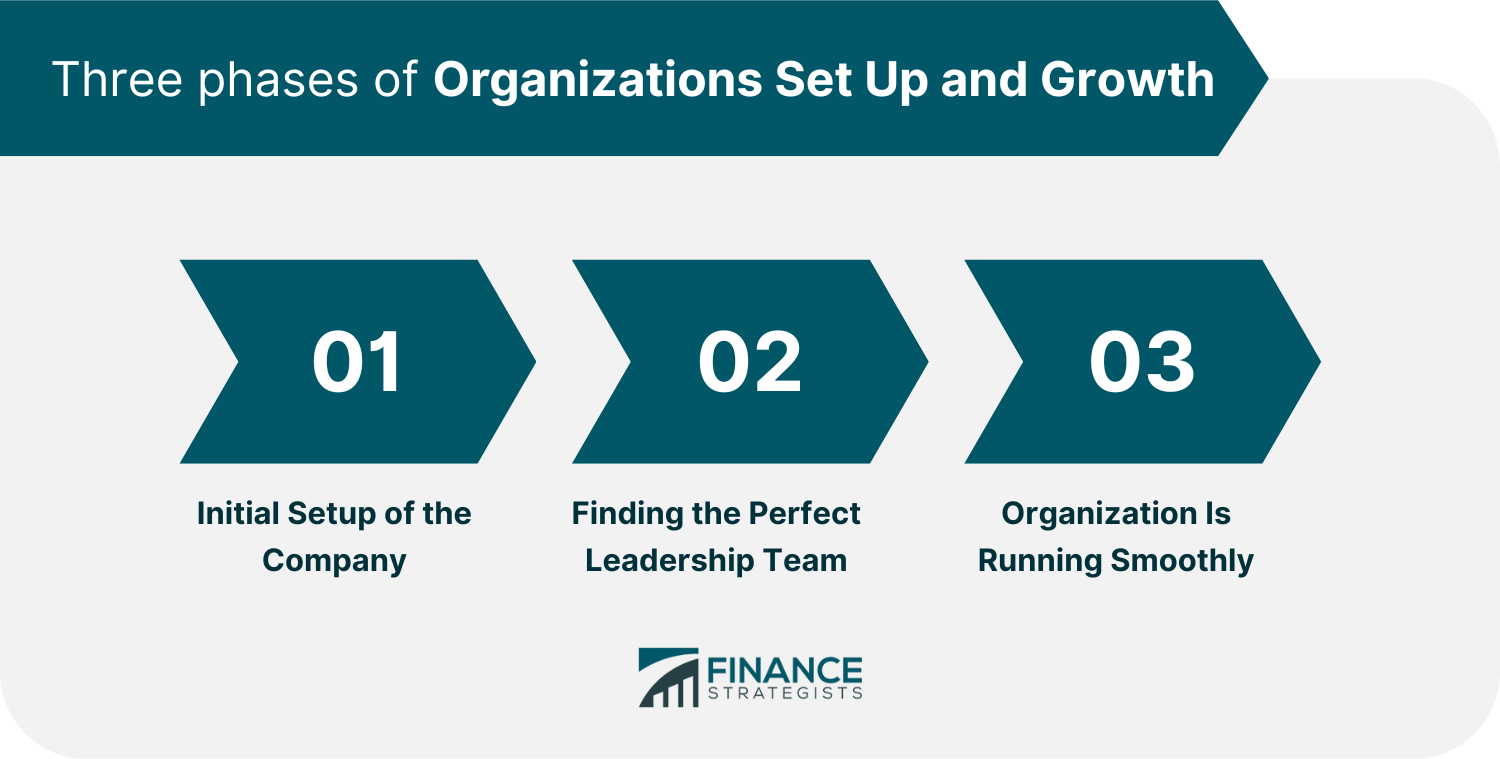
The First Stage Is the Initial Setup of the Company
The Second Phase Is Finding the Perfect Leadership Team
The Final Stage: Once the Organization Is Running Smoothly
To aid in this transition, most organizations provide a thorough onboarding and induction program to quickly get employees up to speed on how things operate from start to finish.The Most Important Aspects of Organizational Design

Case Study
Business Improvement Requires Careful Planning
Step 1: In Design Is To Establish The Purpose And Operating Model
Google:
Microsoft:
Nike:
Starbucks:
Apple:
Amazon:
This Powerful Operating Model
The Definition of the Operating Model
Case study
Why Is a Target Operating Model Important During Business Transformation?
Understanding the Target Operating Model’s Components
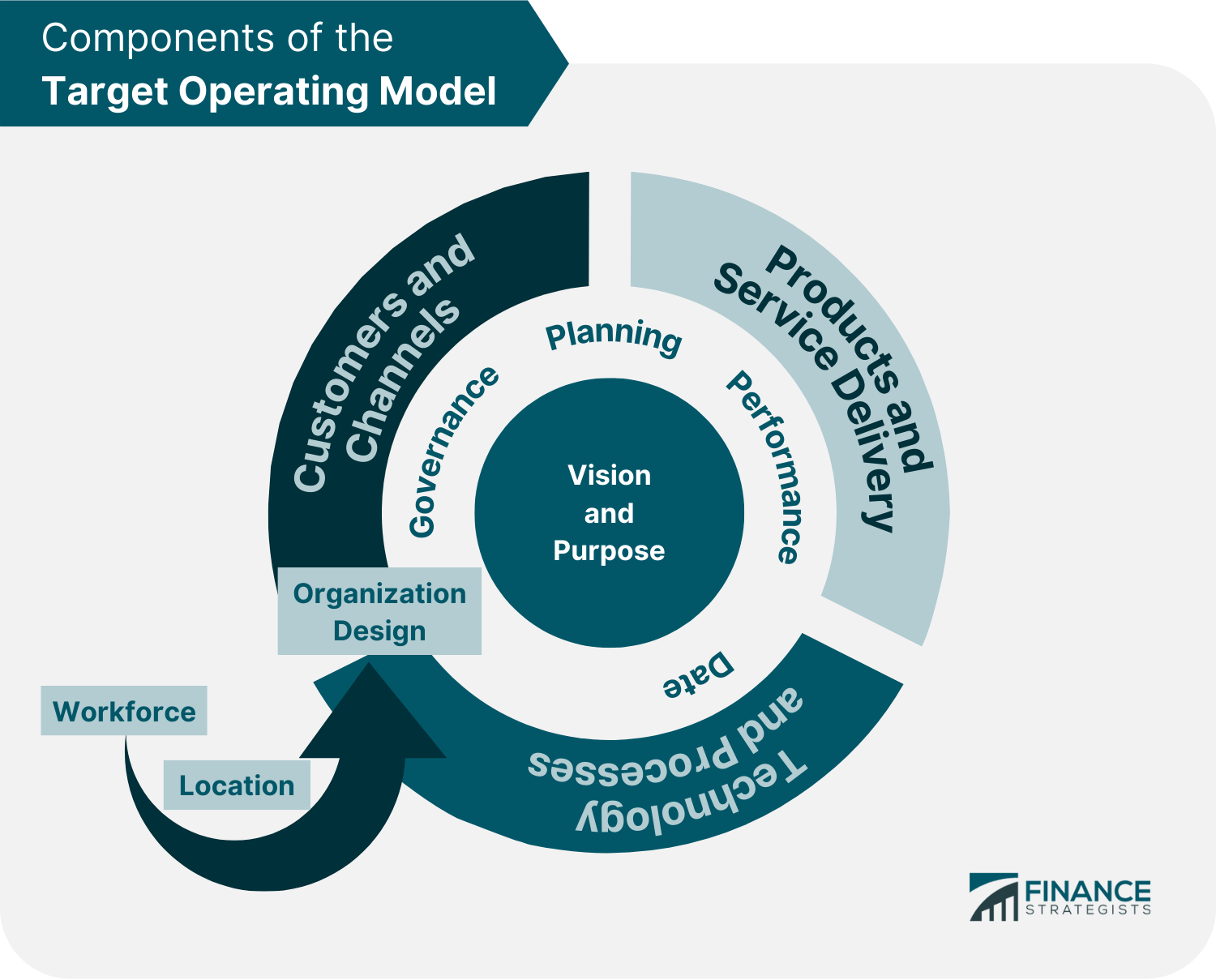
Vision and Purpose
Customers and Channels
Products and Services We Offer
Processes, Technology, and Data
Location
Planning, Performance, and Governance
People And Culture
Examples of Strategic Considerations Applicable to the Definition of a Target Operating Model (TOM):
TOM Components
Vision & Purpose:
Have a high level of awareness regarding client needs, preferences, and views, as well as the use of technology to reduce dependency and manage expectations proactively. Increase transparency, ease of access, and speed of transaction for clientsCustomers and Partners:
Prioritize the services offered:
Process, Technology, and Data:
Location:
People and Culture:
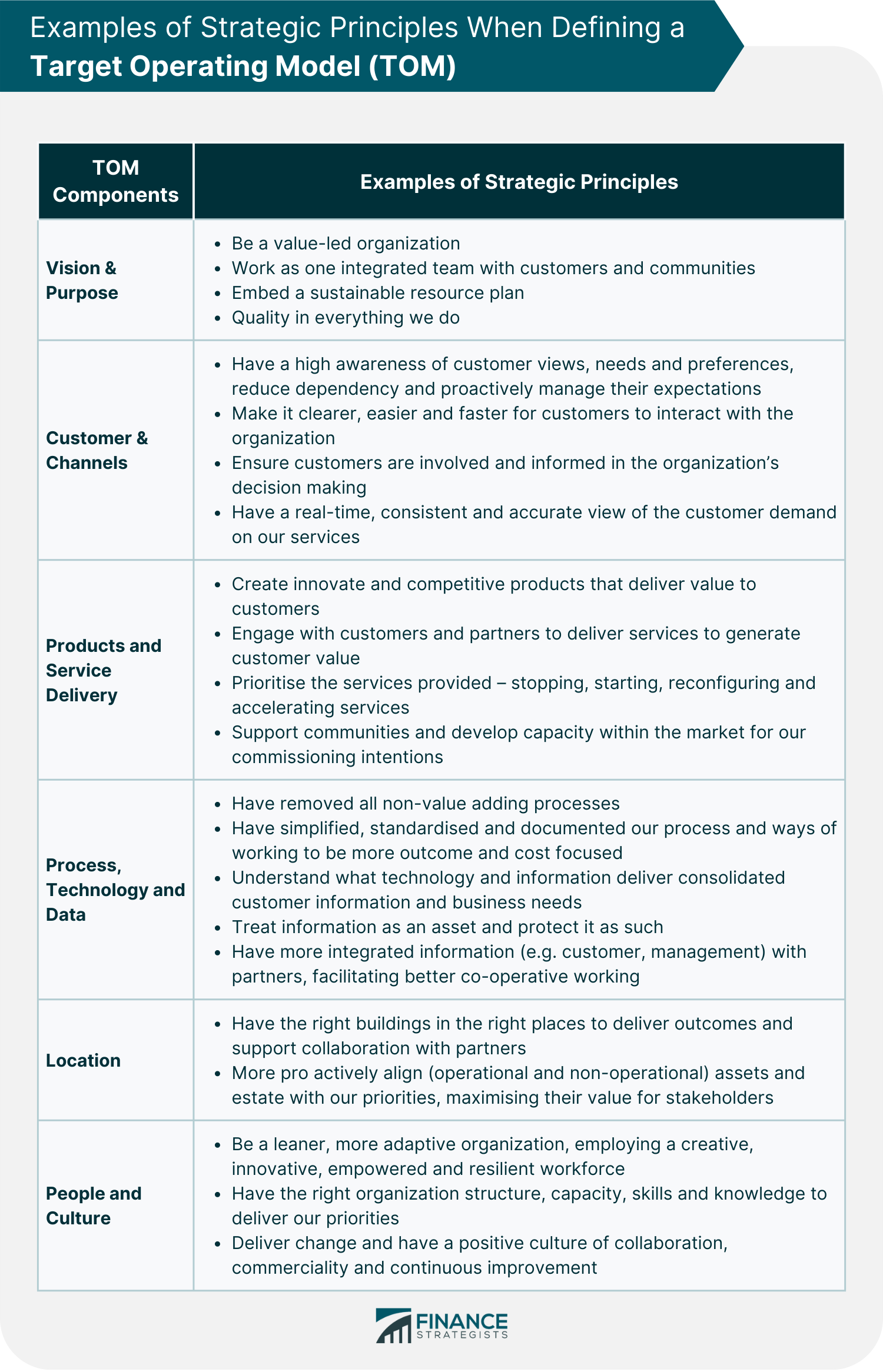
Step 2: Confirm and Synchronize on the ‘Design Principles’ for the Structure

Step 3: Define Management Structure and Responsibility

There Should Be One Work Level for the Company, Regardless of Your Management Position
Case Study
The Head of the Organization's challenges with structure
Organizational Difficulties Occur When There Is a Misalignment Between Management Levels and Work Roles
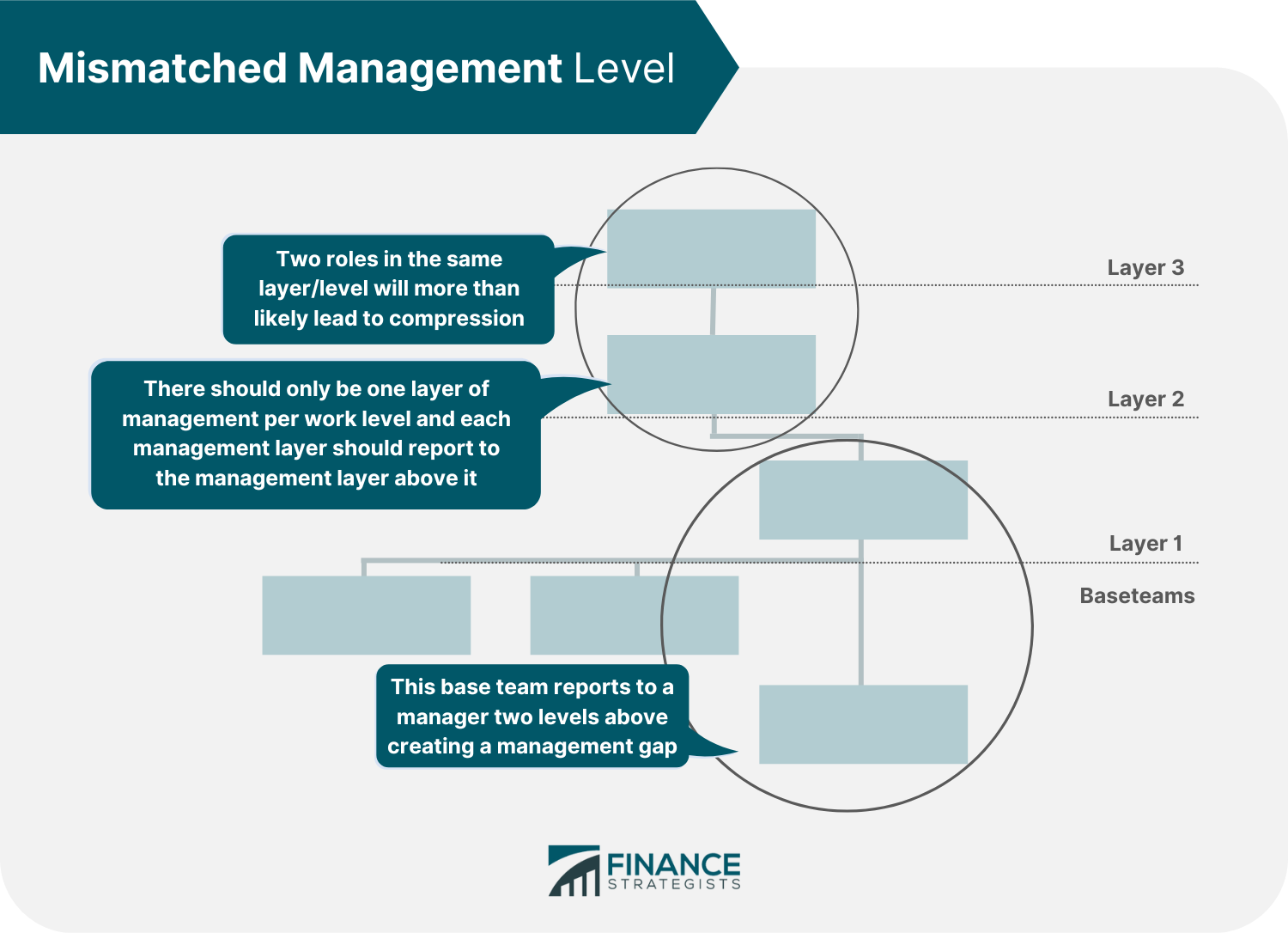
Spans Of Control
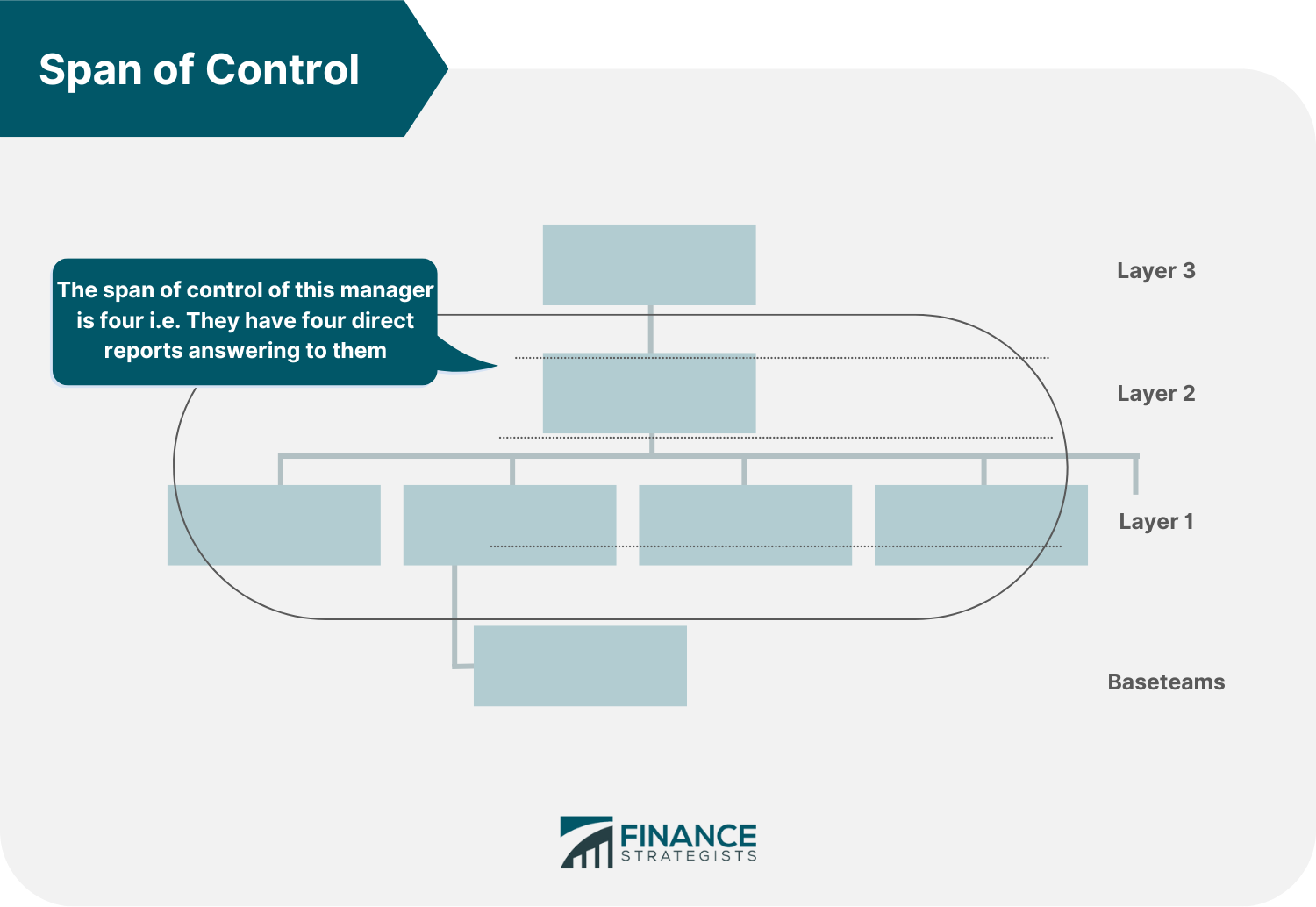
In-Depth Analysis
Step 4: Organize Roles Into a Job Architecture Framework
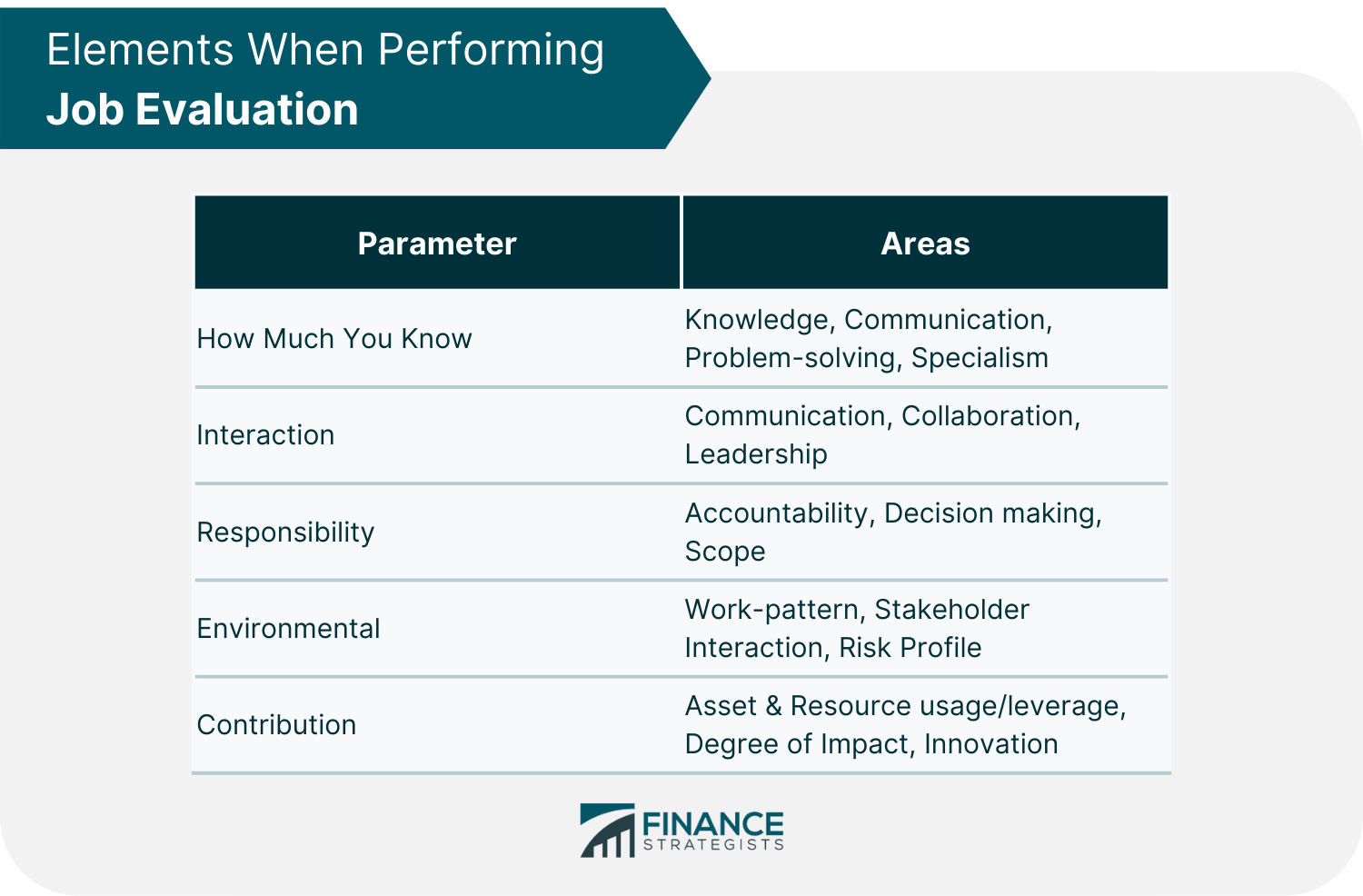
Step 5: Evaluating Structures for Coordination and Collaboration
Functional Structures
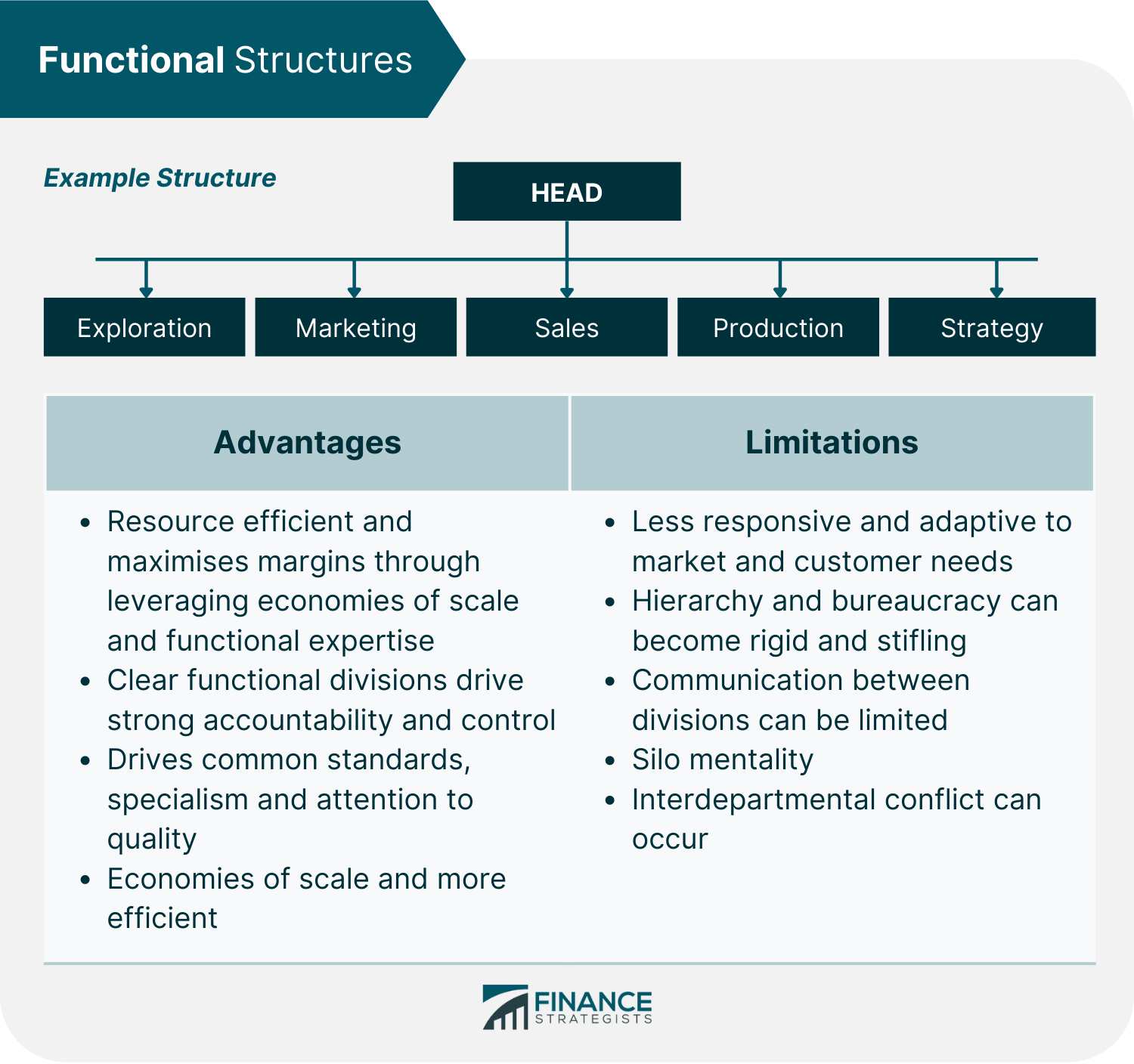
Product Based Structures
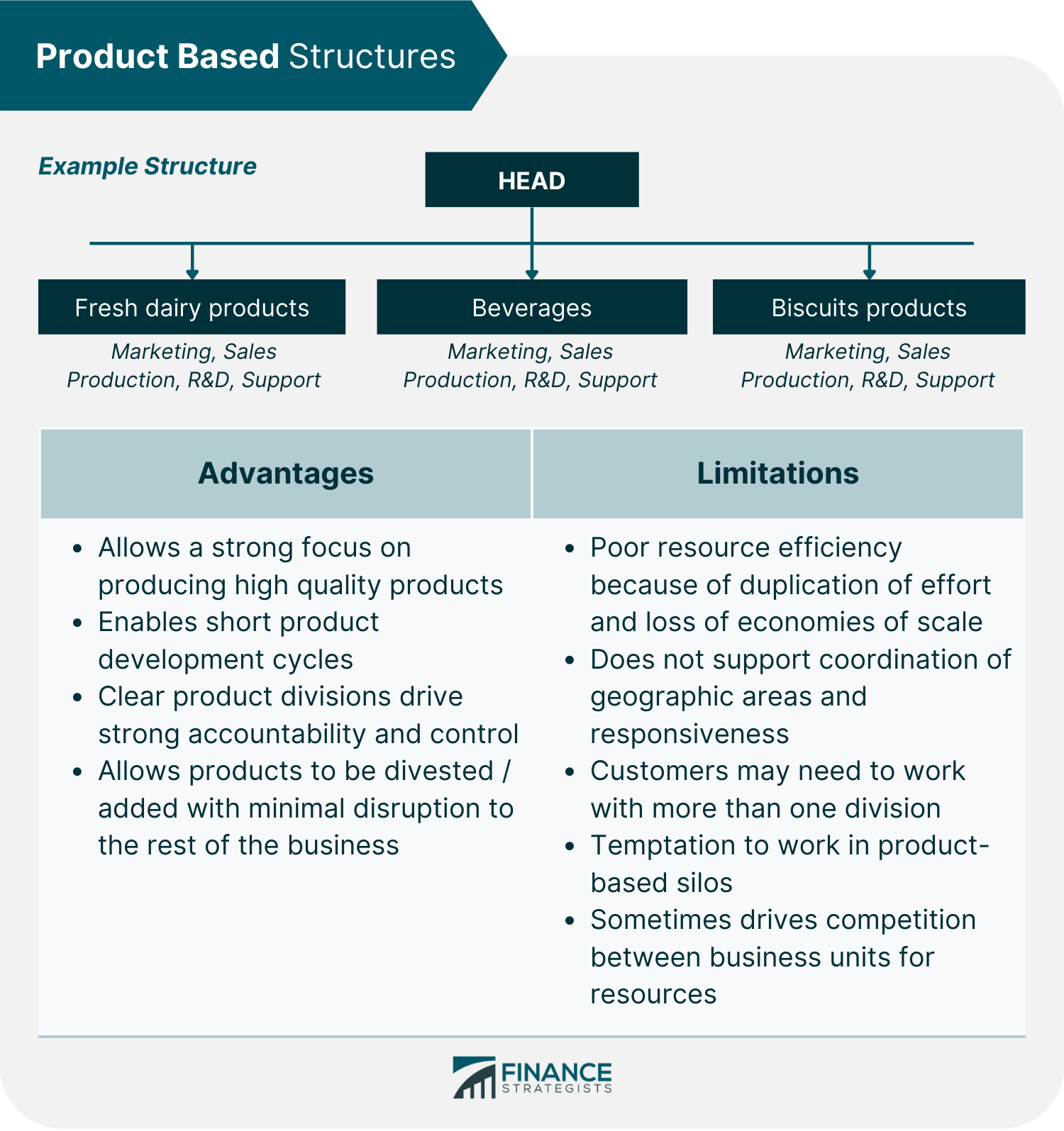
Geographic Based Structures
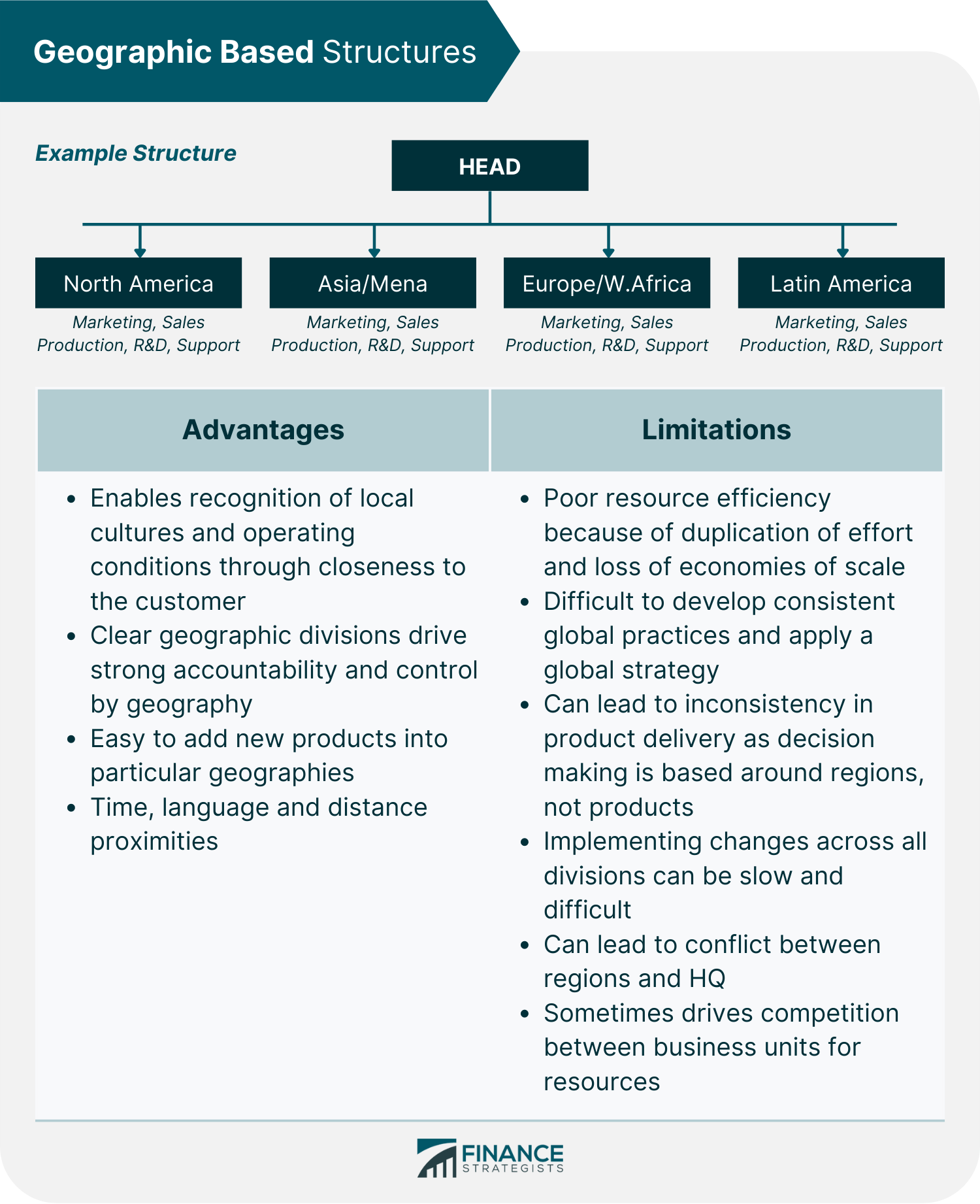
Process Based Structures
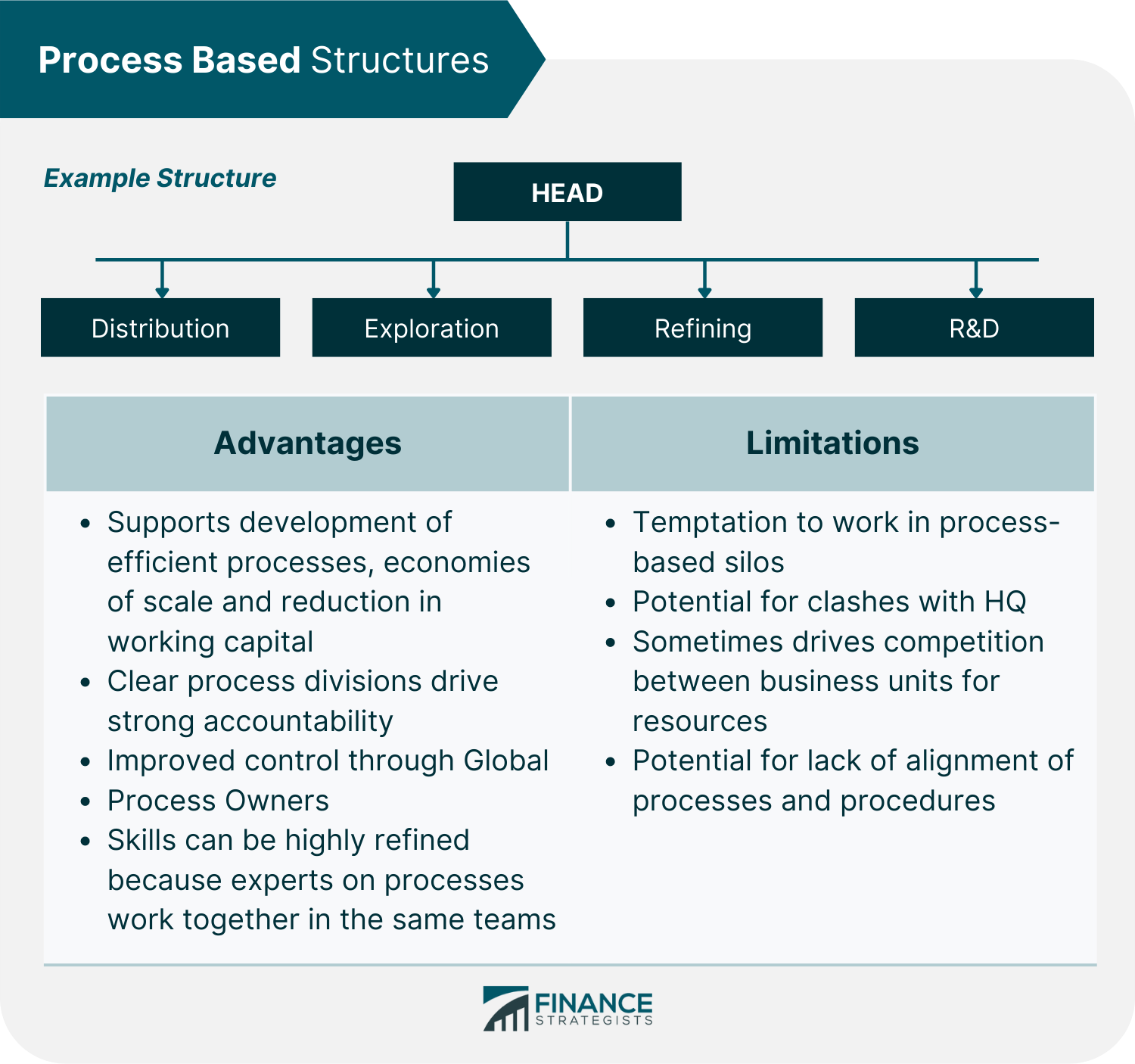
Customer Based Structures
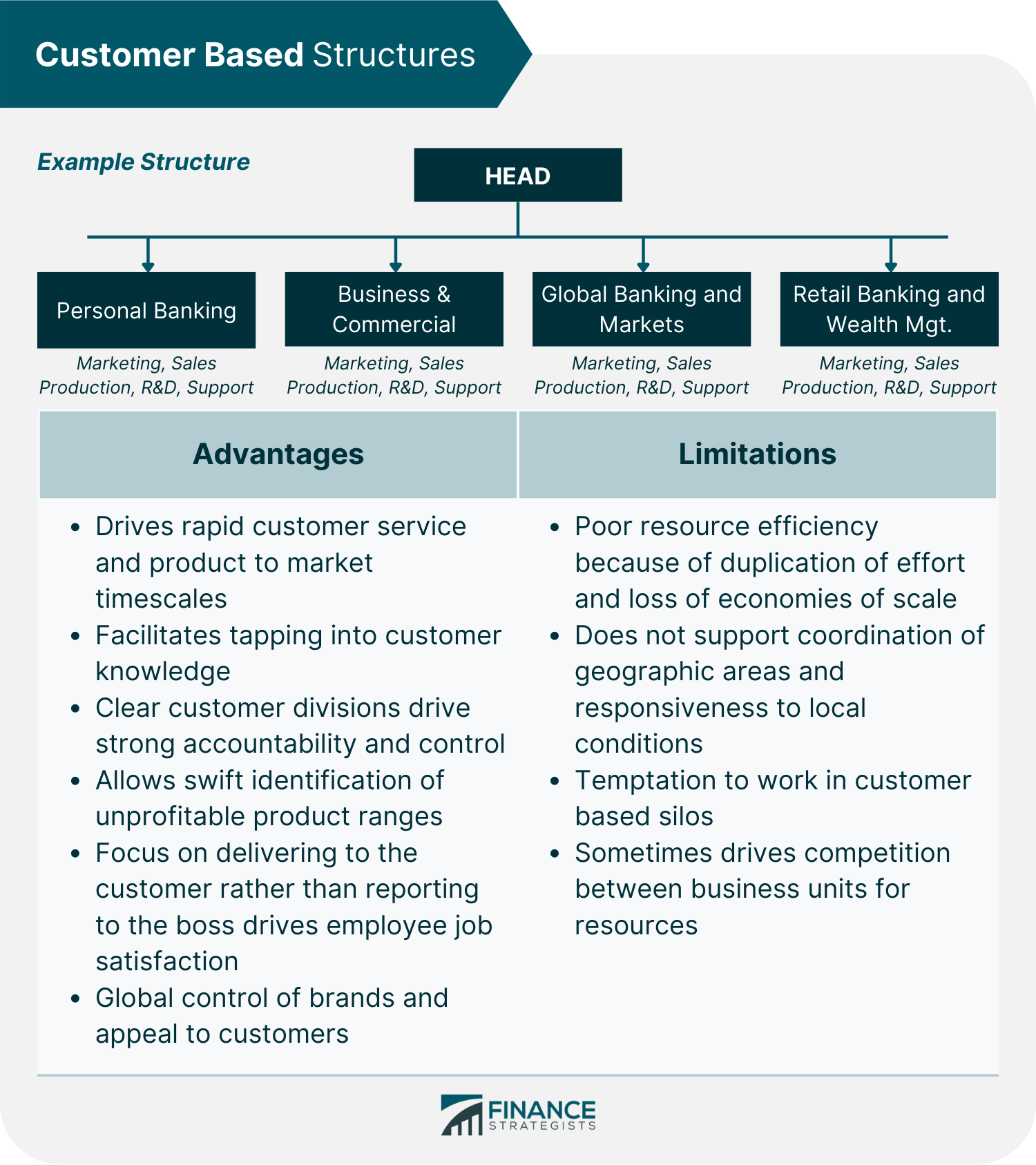
Matrix Structures
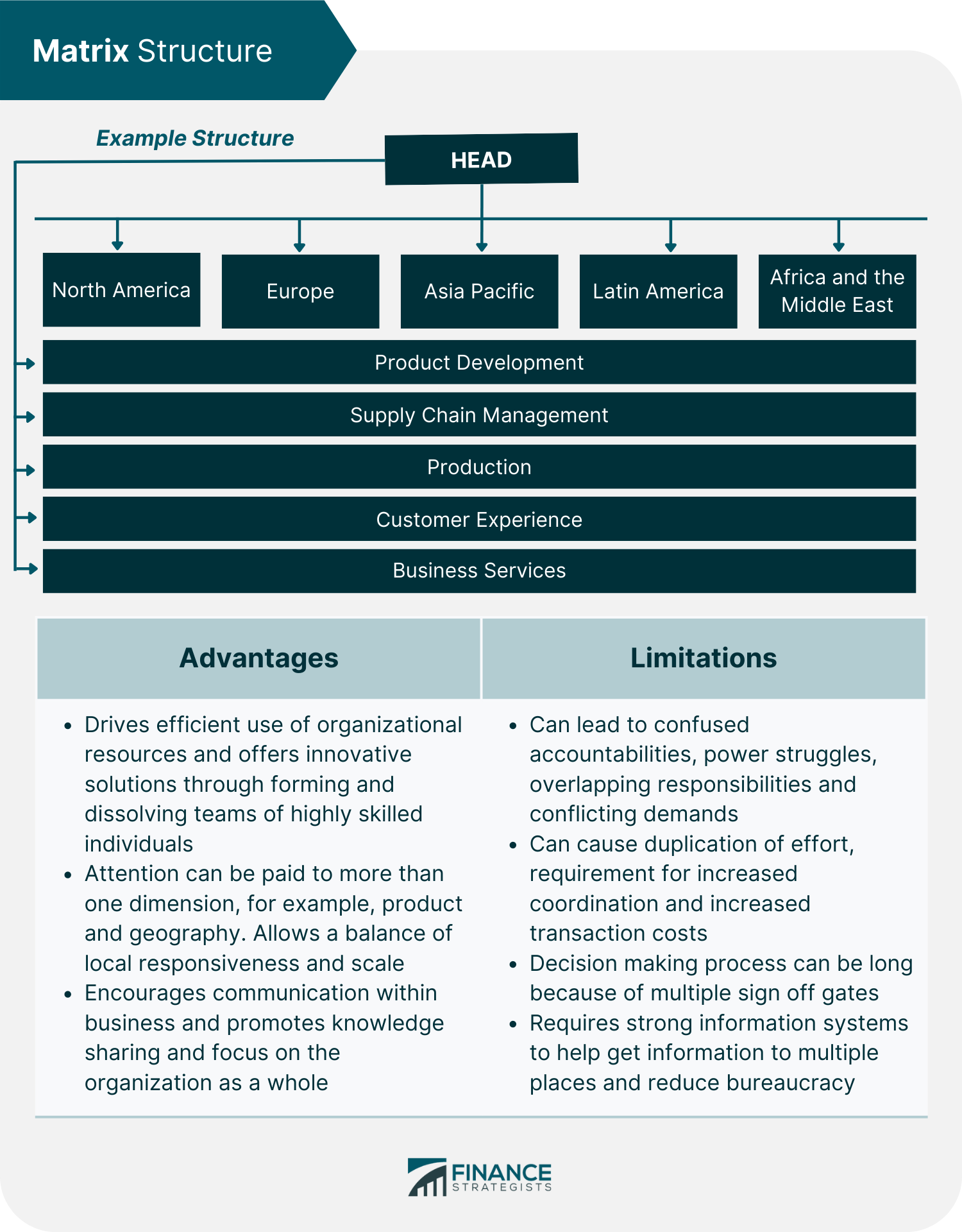
Functional Matrix
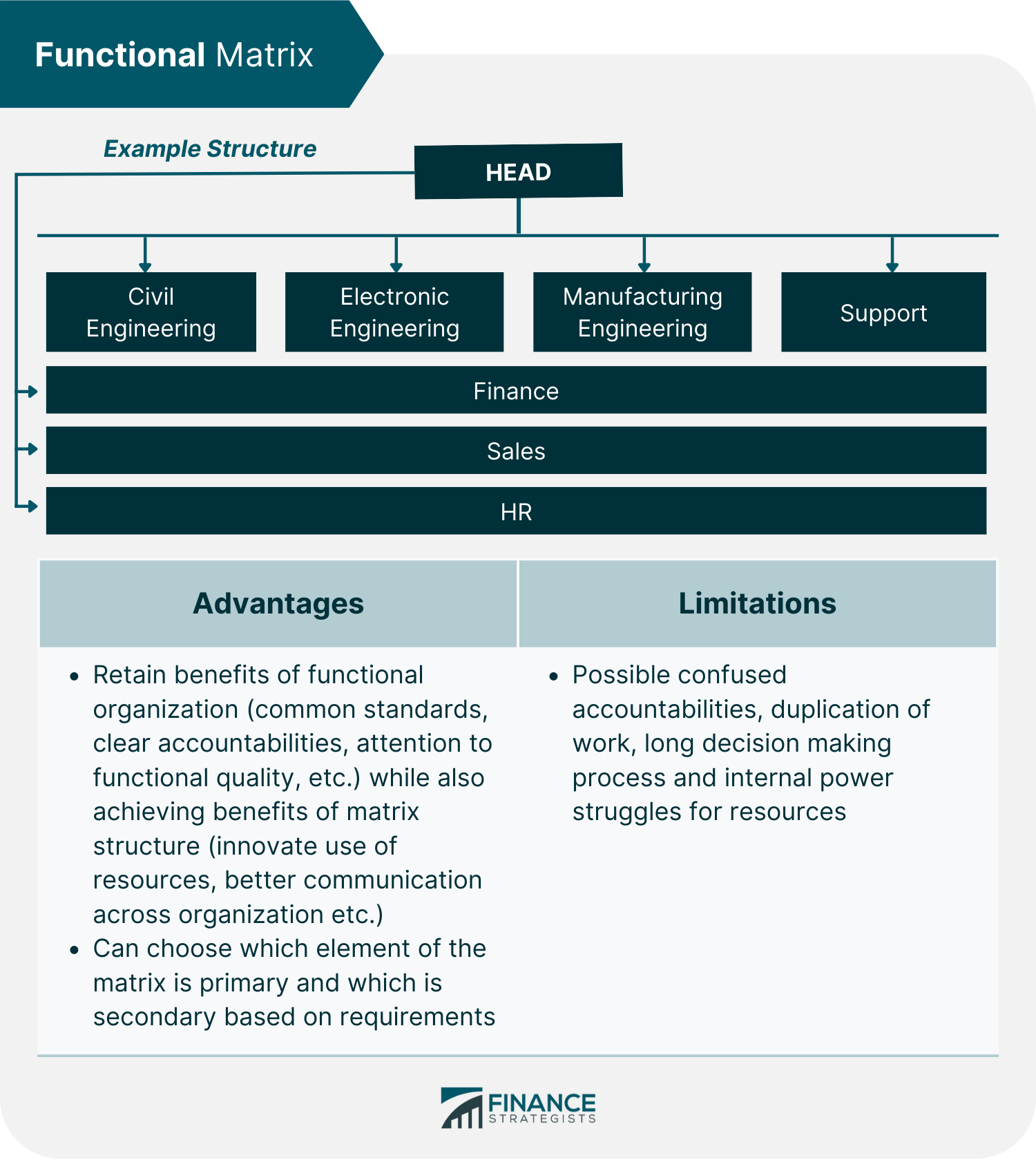
Geographic Matrix
It allows for coordinating numerous product lines into global units made up of products with similar supply chains and brands while still keeping some geographical focus.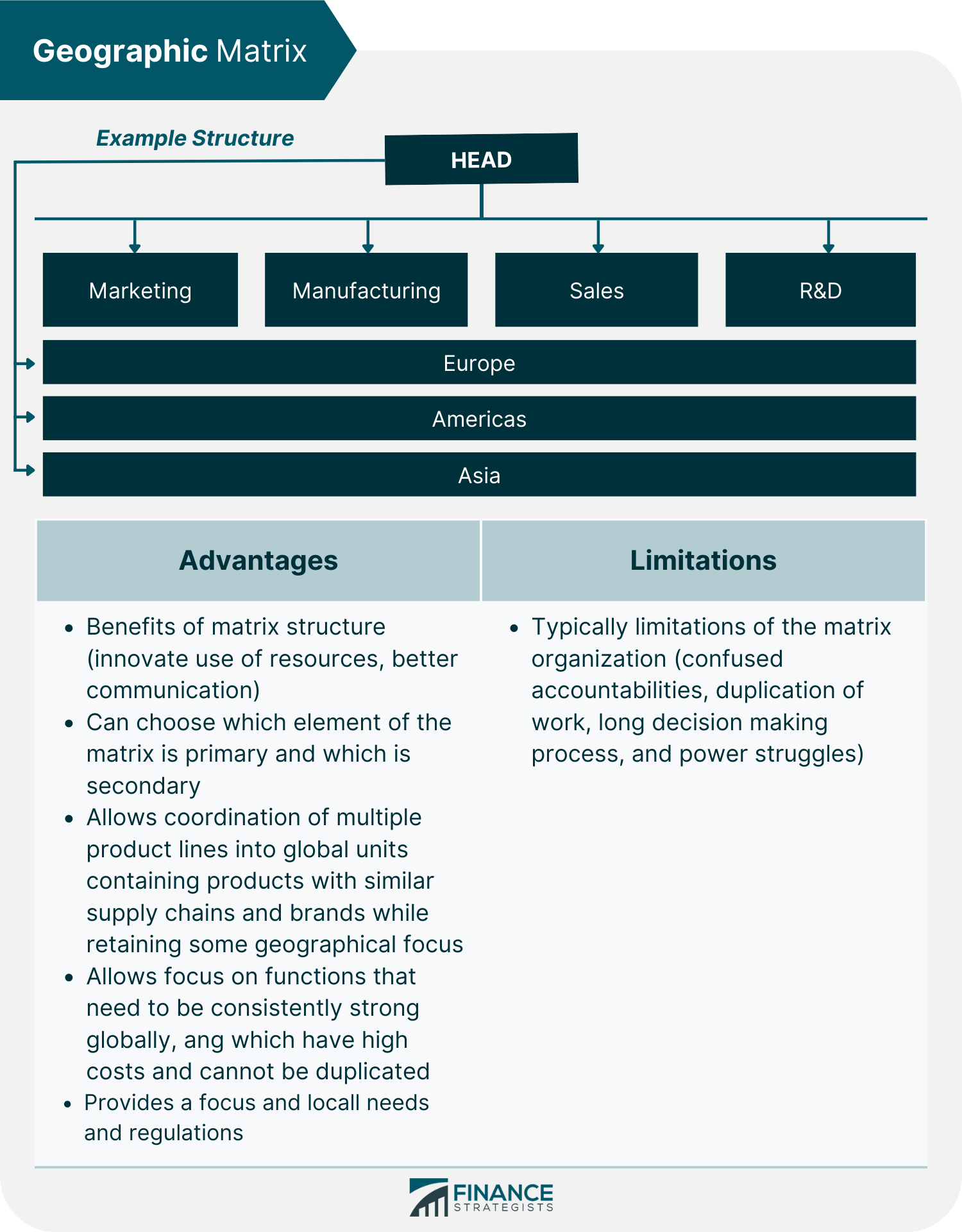
Project Matrix
However, no matter which management style you choose, the organizational design based on a project matrix structure will look like the one shown above.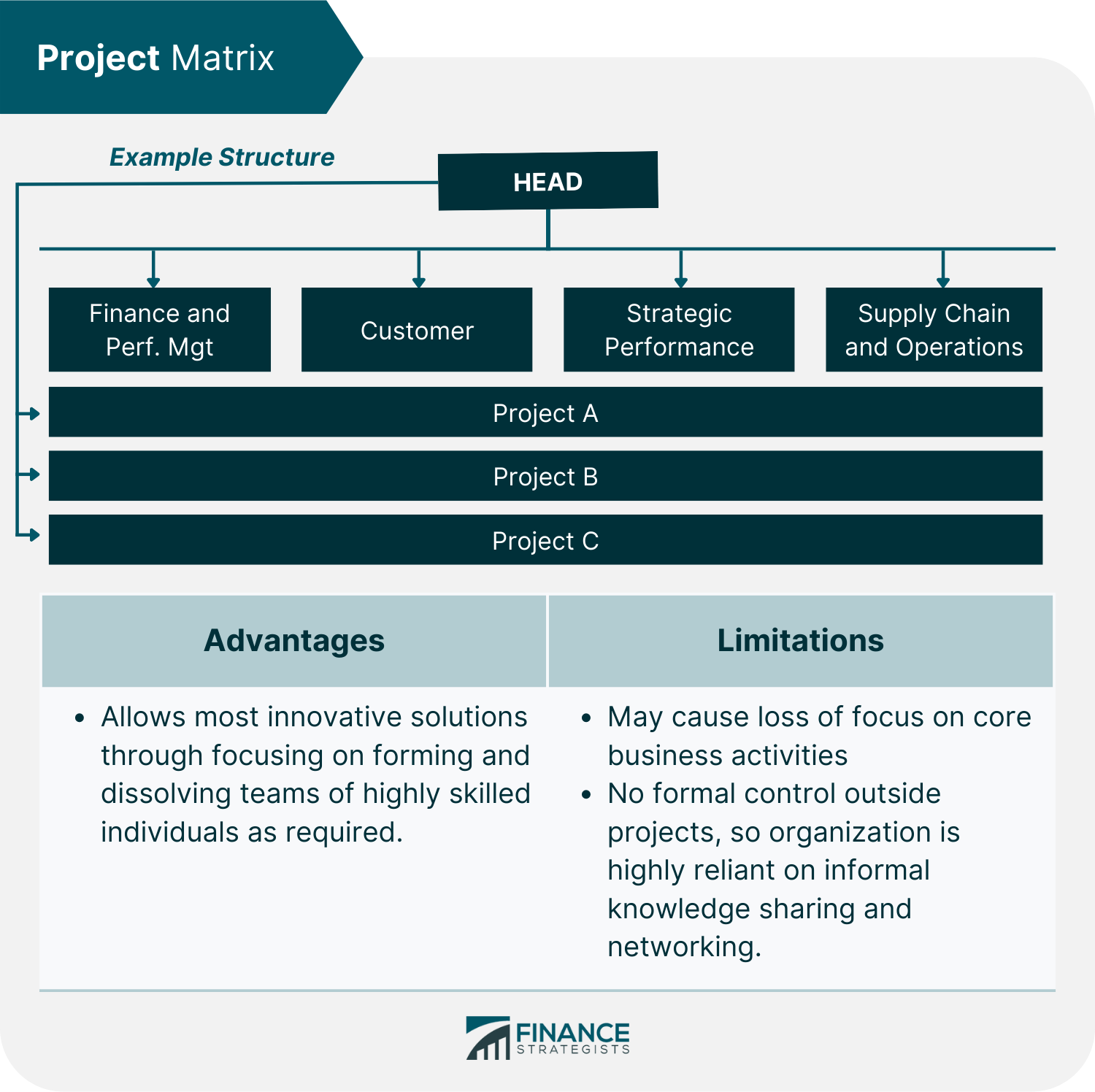
Step 6: Consider Reporting Relationships
Hard and dotted reporting lines, among other things, can be used in various ways throughout an organization to establish various spans of responsibility, control, and influence.
Cross-functional Performance Measures
Teaming Culture
Centers of Excellence
Step 7: Provide Clarity on Roles and Accountabilities
In-depth Analysis
Poorly Designed Roles
Step 8: Design Layer by Layer
What are handoffs, who is responsible for what, how does information flow, and who is accountable for what? How will innovation happen? How can productivity improve? And how do jobs get done effectively?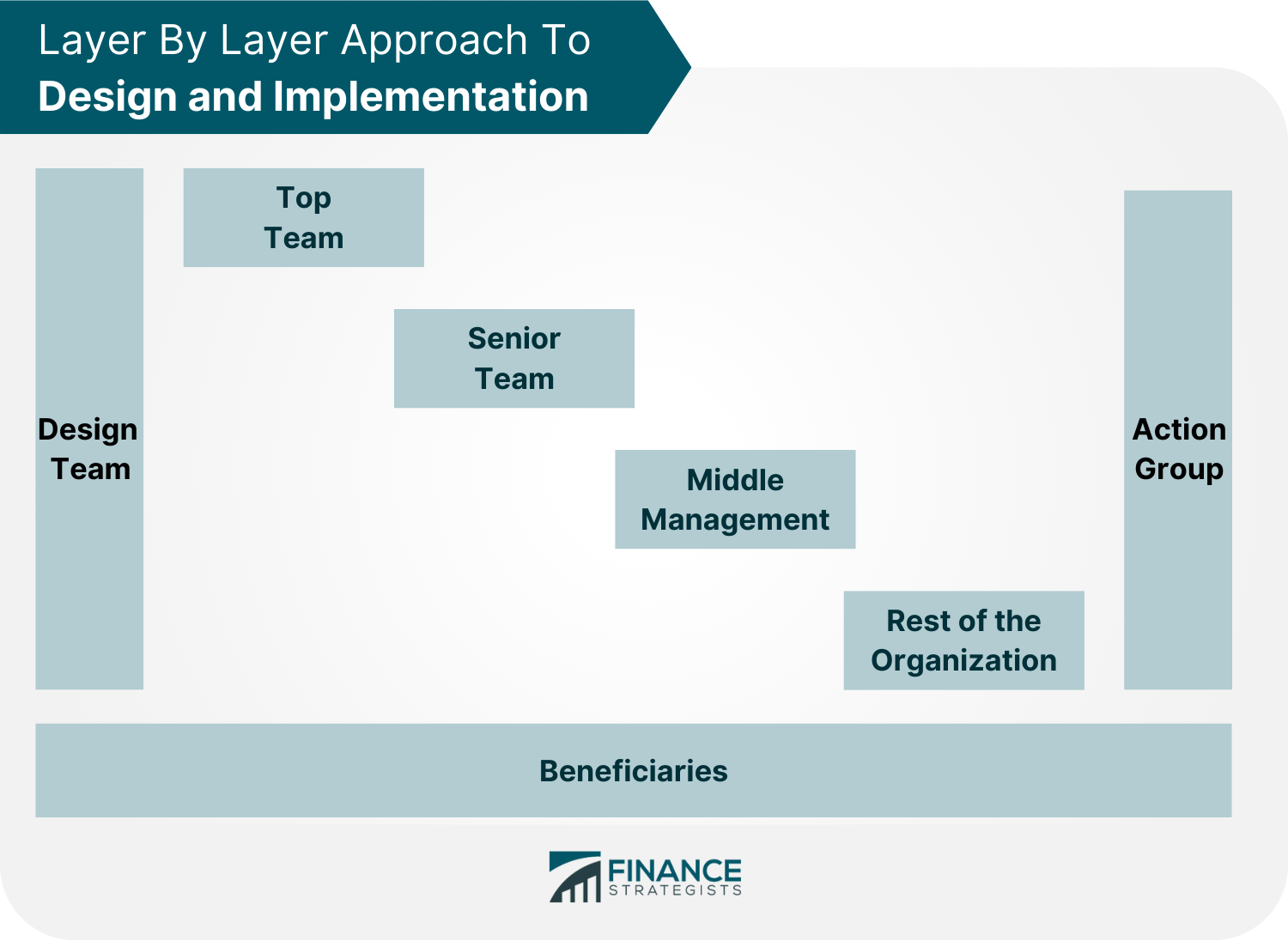
It's typically a lot of back-and-forth communication between the design team, management, and other key stakeholders.
Step 9: Align HR Processes With the Organization Design
What is the importance of alignment?
Case Study
The purpose of the organization should dictate the roles within it.
Case Study
Misaligned Goals cause cross-Functional Rivalry
Use Restructuring to Improve Organization Design and Thus Increase Productivity
Case Study

Taking Action Is the Key to Success
Step 1: Make Sure the Tasks Are Filled by the Individuals Assigned to Them
Step 2: Encourage and Inspire Employees to Work Effectively
Step 3: Change Behaviours, Beliefs, and Values
Case Study
Restructure did not match the values.
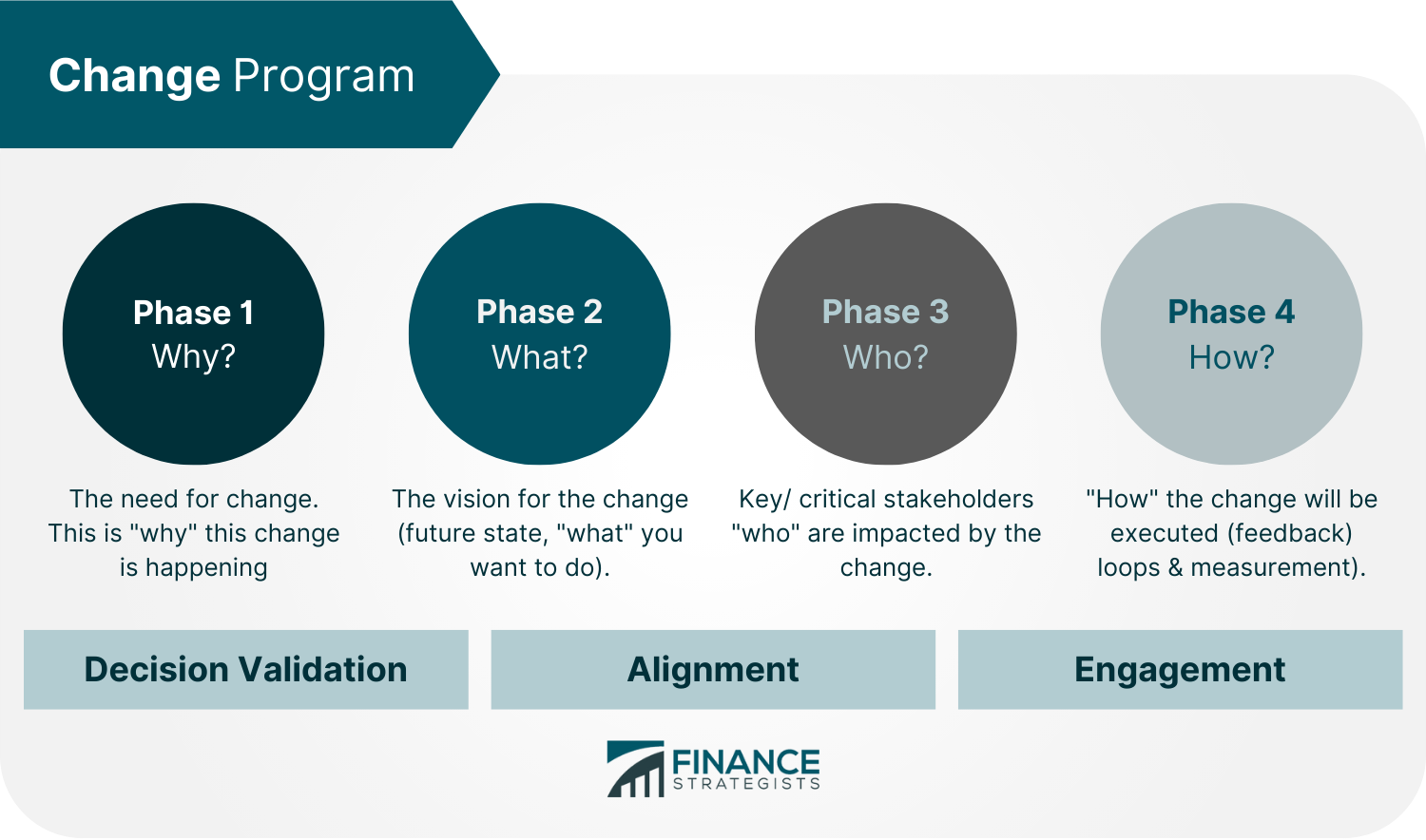
Case Study
Step 4: Maintain Sustainability
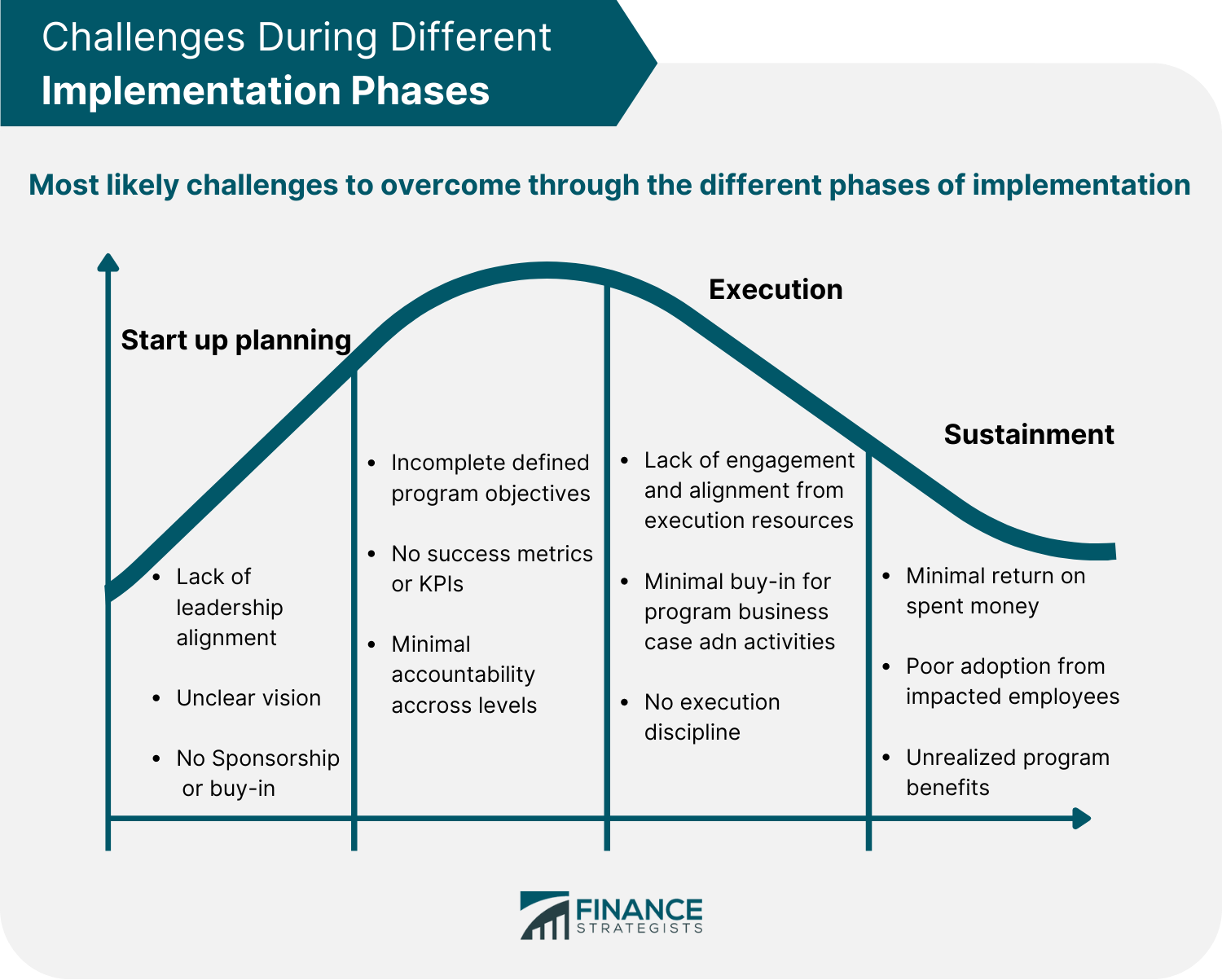
Check 1: Structure Alignment with Design Principles
Check 2: Having Goals That Align With Company Policy
Check 3: Conflicts of Interest and Legislation
Check 4: Defining and Communicating Specific Roles and Responsibilities
Check 5: Efficiencies and Working Methods
Check 6: Role and Organizational Structure Management
Check 7: Processes and Governance Should Be Crystal Clear
Check 8: Inclusion and Participation
The Future of Organizational Design
Conclusion
Organizational Structure FAQs
Organizational design is the process of creating and modifying an organization's structure. The purpose of organizational design is to optimize efficiency and effectiveness by aligning the organization's structure with its business strategy.
The benefits of organizational design include improved efficiency, increased productivity, and improved alignment between the organization's structure and its business strategy. This will result in a more agile and adaptive organization that is better able to respond to changes in the marketplace.
There is no one-size-fits-all answer to this question. Organizations should regularly review their structures to ensure that they are aligned with their business strategy and the needs of their customers. The frequency of these reviews will depend on the rate of change in the marketplace and the organization's ability to adapt to change.
One common mistake made during organizational design is failing to align the organization's structure with its business strategy. This can lead to an inefficient and ineffective organization that is unable to adapt to changes in the marketplace. Another common mistake is designing the organization's structure without considering the needs of its employees. This can result in a workforce that is disengaged and unhappy with their work.
One of the most common challenges faced during organizational design is resistance to change from employees. Employees may be concerned about how the new structure will impact their jobs, workloads, and careers. It is important to communicate the benefits of the new structure to employees and address their concerns before implementing any changes. Another challenge is designing an effective structure for a rapidly growing organization. This can be difficult because the organization's structure must be able to accommodate the needs of its growing workforce while still being efficient and effective.
True Tamplin is a published author, public speaker, CEO of UpDigital, and founder of Finance Strategists.
True is a Certified Educator in Personal Finance (CEPF®), author of The Handy Financial Ratios Guide, a member of the Society for Advancing Business Editing and Writing, contributes to his financial education site, Finance Strategists, and has spoken to various financial communities such as the CFA Institute, as well as university students like his Alma mater, Biola University, where he received a bachelor of science in business and data analytics.
To learn more about True, visit his personal website or view his author profiles on Amazon, Nasdaq and Forbes.















